

How to Use Bleisure Travel to Extend Your Vacations
Workcations, bleisure trips, blended travel—whatever you want to call it, the vacation hack of extending business trips into leisure getaways is here to stay. use these tips to plan them smartly..
- Copy Link copied

More and more, travelers are combining work trips with vacations.
Photo by Michelle Heimerman
If you’ve ever seized the opportunity to spend a few days exploring a new city after a work conference or arrived in town ahead of a client meeting to relax on the beach, go on a hike, or check out a touted restaurant, congrats—you’ve indulged in the art of “bleisure travel.”
The term bleisure refers to combining business and leisure in a single trip. This trend, also referred to as “workcations” and “blended travel,” was well underway before the COVID-19 pandemic and has skyrocketed since, undoubtedly buoyed by the return of business travel and the prevalence of remote and hybrid work.
How popular is this trend? According to last October’s Amex Trendex: Business Travel Edition , 8 out of 10 business travelers said that they had extended a business trip in the past year to work remotely from their travel location or for leisure travel. And per research compiled by online business-travel management company Navan , there was a 72 percent year-over-year increase in blended travel bookings during the first 10 months of 2023 (January through October), compared to the same period in 2022. Additionally, 24 percent of travelers planned to have a friend or relative join them on a business trip in 2024.
The perks of bleisure travel are clear: You are already there and may not need to pay for your flight entirely out of pocket to enjoy a fabulous destination. Whether you are embarking on your first bleisure adventure or your ninth, here are some strategies for elevating your bleisure travel game.
1. Check your company’s bleisure travel policies.
Avoiding reprimands is key for an enjoyable bleisure trip, so get acquainted with your company’s guidelines on extending business travel. This includes knowing the level of flexibility for arriving at your destination early or leaving late, especially if there is a difference in the cost of your flights; understanding how to properly file expense reports; confirming permitted activities during business trips; and determining whether bringing companions is allowed.
2. Take advantage of weekends and public holidays.
If you hope to partake in bleisure travel without sacrificing precious vacation days (and who wouldn’t?), consider strategically planning your business trips either right before or after a weekend. For an extended getaway, aim to schedule around a public-holiday or long weekend to maximize your time at the destination while keeping your PTO balance intact.
3. Pack versatile clothes.
Bleisure travel essentially involves two trips in one, which can present a packing challenge. Select versatile and comfortable wardrobe pieces that transition from the boardroom to a leisurely walking tour (like these editor-tested travel pants ). Sticking to a cohesive color scheme, a proven travel tip, can save space in your luggage. ( Packing cubes can help too, as can a one-bag strategy. )
4. Think ahead when making hotel reservations.
Combining business and leisure travel means that you will need to make separate hotel reservations, one for the company-covered leg of the trip and one for your personal time. If you want to stay in the same room at the same hotel for the duration of your stay (a good idea, as it will save you time), contact the hotel in advance and request to stay in the same accommodations from check-in to checkout.

Advertiser Disclosure
Many of the credit card offers that appear on this site are from credit card companies from which we receive financial compensation. This compensation may impact how and where products appear on this site (including, for example, the order in which they appear). However, the credit card information that we publish has been written and evaluated by experts who know these products inside out. We only recommend products we either use ourselves or endorse. This site does not include all credit card companies or all available credit card offers that are on the market. See our advertising policy here where we list advertisers that we work with, and how we make money. You can also review our credit card rating methodology .
What Is “Bleisure Travel” and How Can It Benefit You?
Senior Content Contributor
48 Published Articles
Countries Visited: 58 U.S. States Visited: 40
Editor & Content Contributor
151 Published Articles 735 Edited Articles
Countries Visited: 35 U.S. States Visited: 25
Stella Shon
News Managing Editor
87 Published Articles 620 Edited Articles
Countries Visited: 25 U.S. States Visited: 22
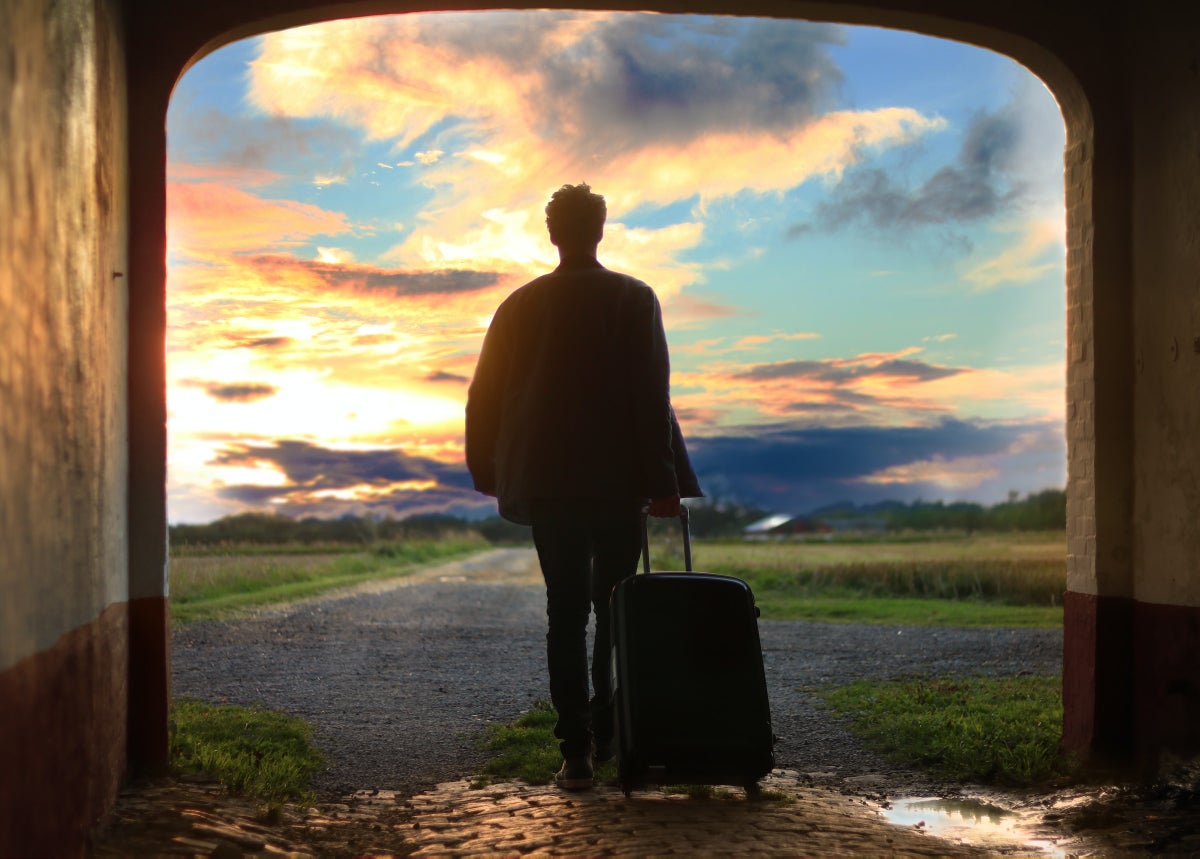
What Is Bleisure Travel?
Bleisure travel is everywhere, it’s a better use of time, make sure you get the leisure time you need (and deserve), have new and memorable travel experiences, feel more fulfilled and become a better employee, bleisure travel benefits both employees and companies, bleisure vs. workcation, how bleisure travelers can maximize hotel stays, credit cards, elite status, and rewards are key, the future of bleisure travel rewards, hyatt hotels, crowne plaza hotels, arlo hotels, how bleisure travelers can maximize home rentals, how rental property hosts can cater to bleisure travelers, what to pack for a bleisure trip, final thoughts.
We may be compensated when you click on product links, such as credit cards, from one or more of our advertising partners. Terms apply to the offers below. See our Advertising Policy for more about our partners, how we make money, and our rating methodology. Opinions and recommendations are ours alone.
As corporate and leisure travel have both bounced back after the COVID-19 pandemic, companies, travelers, and the travel industry itself are all figuring out how to navigate the “new normal” in the travel world, which includes concepts like revenge travel, the return of meetings and large events, a major focus on sustainable travel, and a particular concept we’ll focus on with this article: “bleisure travel.”
Business travel was slower to pick back up than leisure travel, but it’s made a comeback in recent months. Now, however, people have a decidedly new outlook on how to handle it, especially now that remote work and hybrid office models have stuck around beyond the end of the pandemic. Corporate travel and personal travel have evolved , and people are looking at these 2 spheres of travel in different ways and combining them like never done in the past.
We’ll discuss the bleisure travel trend, how people are doing it, how it can benefit you, and how the travel industry is (and should be) responding to it . We’ve interviewed professionals in the travel and event planning industry as well as business and bleisure travelers to understand a bit more about why and how this movement is changing the way people travel, work, and vacation.
Bleisure travel is the blending of both business and leisure travel , and it can be manifested in many different ways. Bleisure travel can mean:
- Business travelers who tack on extra personal days before or after a work trip, meeting, or corporate event
- Remote workers who take vacations but can also work remotely from whatever destination they’re in
- Business travelers who bring along friends or family with them to enjoy the hotel or destination while the main traveler is working or in meetings, then take time off to spend with them in the destination
- Any type of trip that combines traveling both for pleasure and professional purposes
We do want to make it clear that bleisure travel isn’t suggesting you take a personal vacation and turn it into a business trip. In fact, it’s really the opposite — ensuring you can make time for leisure and relaxation before, during, or after a work trip or corporate event.
Bleisure Travel Is Trending
People are more open to bleisure travel than ever before . According to a survey by Booking.com , business travel is picking back up. But in a post-COVID-19 world, employees want team building away from the office, which reflects a feeling that work travel includes “productive play.” In fact, 51% of survey participants are hoping to see their employer use the money saved from the shift to remote work spent on corporate travel and retreats.
And those whose companies have done so seem to have nothing but positive feedback. We chatted with a Paris-based product director in a tech startup who told us his 20-person company has employees around the world in places such as Sweden, France, and the U.S. While he’s able to voluntarily pop into the Paris office a few times a week, he also works from home and connects with his team during the optional quarterly meetup retreats his company offers.
“The trips are fully paid for by the company (travel, hotel, and food), usually a week long in destinations like the Alps, Mallorca, or Marrakech. It’s really helpful to spend time with the team, work in the morning, and do fun activities like yoga or skiing afterward. It’s also such a privilege to bring my family along — my company has even paid for a nanny to help with our 2 children. We work hard all quarter knowing these retreats are coveted rewards that also help with team building and connection,” he explained.
This move to mix business and leisure travel is happening in all industries and for all kinds of work trips. We spoke to Catherine Chaulet, President and CEO of Global DMC Partners , to understand more about why and how this is happening.
“ The trend to mix work and leisure is requested more and more for groups, meetings, and incentives. Allowing for free time is also now becoming a must. As meeting planners work on attracting attendees to their meetings, incentives, conferences, etc., they’ve had to integrate these into their programs. Attendees want free time to work but also to relax,” she told Upgraded Points.
As combining work and play becomes the norm, travelers, employers, and meeting planners are figuring out ways to incorporate leisure into work travel and events, including adventure, wellness , relaxation, family and friend time, exploring, and beyond.
Not convinced bleisure is for you, or aren’t sure how to incorporate it into your professional life and travels? Read on to find out how.
Bleisure Travel Offers Numerous Benefits
A study done by the Expedia Group in 2023 showed that 62% of travelers plan to travel in the next few months to relax and disconnect. And this is exactly why you should take a business trip and spin it into a bleisure trip. Why not take a few extra days and turn a work trip into some time to also relax, disconnect, and rejuvenate?
Here are just some of the ways bleisure travel can be beneficial to you.
If your company pays for airfare or you get a discount on additional hotel nights (or you can write the trip off as a business expense), you’re saving money on your vacation . And now, with the cost of airfare and accommodations on the rise, being able to travel affordably is key .
To understand a bit more about how employees can save money on bleisure travel, we spoke to Nick Morse, a Group Category Director at Rubix Group, who frequently travels for work and meetings.
He told us that since the pandemic ended, business travel has picked up once again, and he’s been traveling during weekdays and then using weekends to stay in destinations like London, Germany, and France. “It’s been a great way to get some fresh air and take a break, and at a reduced cost because my air travel is already paid for. When possible, I take my wife along, too, and she has time to relax and enjoy while I’m working; then we take the weekend exploring together, saving us money on a vacation.”
To understand the other side of things, we spoke to Michael Johnson, Senior Events Ninja at Event Dojo , who primarily plans incentives. He told us that he’s started to plan entire leisure days into incentive trips, and has had a 100% positive response from attendees. “People get to enjoy themselves without having to spend their own hard-earned money to do so. Additionally, with the costs of flights soaring, this huge expense is covered by their company, which allows them to extend their stay by a few nights on their own to really make a memorable vacation out of it.”
If you’re already on that 8-hour flight for a business trip, take advantage of this time . You’ve already spent the time flying and overcoming the jet lag. Now you can enjoy a getaway without having to fly long-haul again or catch up on missed sleep.
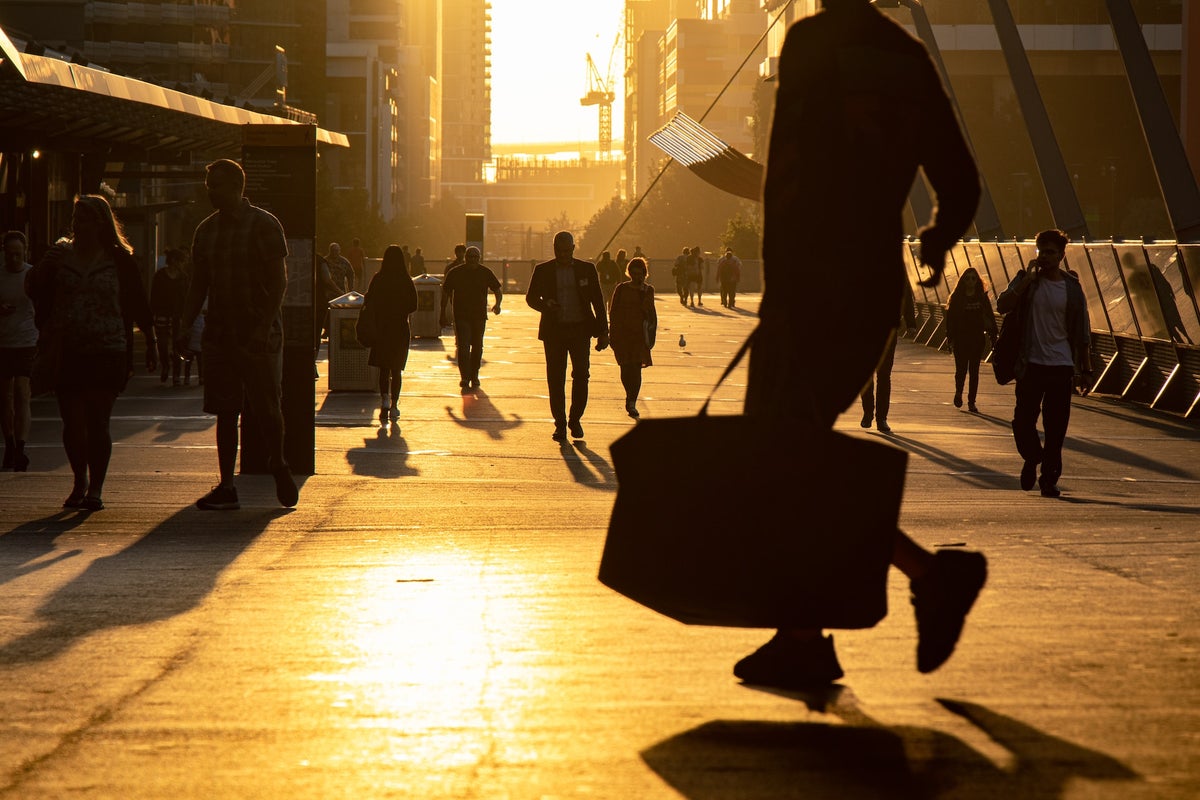
For example, we talked to an IT Project Manager for a global consulting firm who explained he loves flying to destinations that have a 1 to 2 hour time difference, but earlier. “I can get a head start on the East Coast with work, complete all my tasks by about 4 p.m. local time, and then enjoy the beach, restaurants, and nightlife like a local.”
According to a study by Pew Research Group , 51% of Americans don’t take all their vacation time. Tacking a leisure trip onto a business trip ensures you’ll take the vacation time you’re entitled to, especially if you don’t have the time and energy to plan a standalone vacation. You earned this time off — take it!
If you have a business trip or event in a foreign, far-flung destination, you may be exposed to a part of the world or a culture that you may never have gotten to see otherwise. You may even get to visit a state you hadn’t previously considered planning a vacation in. The IT Project Manager told us that his company has a small presence in Brazil, with 3 employees there that directly report to him.
By combining a trip to see the team with a vacation, he could both connect with his team and explore São Paulo. “I used less vacation time by combining a work trip with a vacation, and I was exposed to a whole new culture, which was exciting and novel,” he said.
And people within the travel industry are seeing this type of travel more and more, especially when it comes to meetings and events. Mr. Johnson mentioned that “ After unprecedented lockdowns, we’ve seen more excitement in getting out and exploring the world than in the years previous .”
The next time your company considers that meeting in Buenos Aires, an event in Bangkok, a corporate retreat to Egypt, or even a sales meeting in Wyoming, make sure to take advantage by tacking on a few extra days, turning a business trip into a bleisure experience to see a new place.
Rested employees are happy ones, and according to that aforementioned Booking.com study , more than half (59%) of workers around the world believe traveling can help them to be more productive at work, which brings us to our next point: Bleisure travel is good for businesses , too.
With a focus on remote and hybrid work, it’s more important than ever to get employees together — not just in business settings, but in leisure ones, too.
According to Ms. Chaulet, “Corporations sometimes have challenges building team spirit within their companies with staff working from home. Combining business and leisure on these trips helps build this sense of camaraderie among employees. This brings efficiency, better teamwork, and ultimately stronger loyalty to corporations .”
Extending a work trip to include some leisure time, or better yet, having leisure time built into a corporate retreat, event, or incentive trip, can boost employee efficiency, productivity, and fulfillment, leading to happier, healthier, and more loyal employees. This can boost team morale and company productivity , achieving a strong ROI and benefitting the bottom line in the process.
“ Workcations” and “bizcations” are terms that are often used interchangeably with bleisure travel, but it’s important to note that they aren’t the same thing .
Working during what’s supposed to be a relaxing vacation often happens (a workcation). Many Americans don’t take their allotted time off as it is, so if working on a vacation can be avoided, we suggest trying your best to make that happen (we know it’s not always possible). And workcations are also different than working remotely from a new destination — or digital nomad-ing — where you may travel to a place to work “from home” for a significant amount of time, but also build in some leisure or vacation time.
According to a JobSage survey , “More than half (59%) of Americans don’t like the concept of workcations.” And honestly, neither do we. Working during your vacation kinda stinks, after all. But the reality is that many people take workcations because they simply can’t take vacations. Some can’t fully disconnect, while others can’t dedicate the time to really relax and not work. According to the survey, 47% of respondents have taken a workcation because they felt they couldn’t take time off.
Instead of thinking of workcations and bleisure travel as the same thing, perhaps it’s time to think about bleisure travel as a possible solution (or at least a Band-Aid) to banishing workcations .
We can’t expect centuries of ingrained ideas about hard work to dissipate overnight, but perhaps tacking on a few days of “true vacation” after working hard during a corporate trip is a realistic scenario.
How Hotels Can (And Already Are) Catering to Bleisure Travelers
Employers aren’t the only ones capitalizing on bleisure to benefit their companies. Hotels are also taking note of this movement and offering amenities and features that benefit bleisure travelers.
IHG, for example, has called it “blended travel,” understanding that flexibility is key when it comes to providing comfortable stays for all kinds of travelers. Ginger Taggart, Vice President, Brand Management, Global Crowne Plaza, said in a white paper discussing the future of travel : “Our guests are looking for more flexibility to rebalance their lives, and we’re continuing to evolve and invest in the blended travel space to provide the lives that they now want to live as they travel.”
The paper states that 60% of U.S. travelers plan to add leisure days to future business travel, so hotels need to be ready, offering elements that bleisure travelers want.
A study by Passport Photo Online showed that 65% of Americans book hotel rooms for work 1 to 4 times a month, and nearly 72% of working professionals plan to use hotels for work in 2023 and beyond, noting that they have higher levels of productivity and creativity when working at a hotel.
According to travelers, things like having their bed made every day ( hotels that are cutting housekeeping — take note!) are really important for creating a comfortable working environment, as are things like plentiful food and drink offerings, speedy Wi-Fi, special discounted rates for those who extend business travel into leisure travel, comfortable in-room workspaces, business-friendly amenities like free adapters upon request or plenty of electrical outlets in guestrooms, a business center or dedicated co-working space, printing options, childcare options, and flexible check-in and checkout times.
The aforementioned study also stated good lighting and quiet rooms as additional wants and needs for bleisure travelers.
Beyond just amenities for business travelers, hotels need to embrace the versatility that a bleisure traveler needs to enjoy themselves during the leisure part of their trip, too, by offering things like pools, fitness centers, beach access, and beyond, all things someone might want to enjoy after a few days of meetings or work events.
Bleisure travelers need the best of both worlds: amenities that benefit business travelers as well as amenities that make for a fun and comfortable leisure vacation. Find a hotel that has it all for the best bleisure travel possible.
Holding certain travel credit cards , membership, or elite status can make it easier for travelers to get some of these perks. For example, the Marriott Bonvoy Business ® American Express ® Card offers a 7% discount on standard rates for reservations of standard guest rooms at participating Marriott Bonvoy hotels when booked direct (terms apply), as well as complimentary Gold Elite status , which offers late 2 p.m. checkout (upon availability), among other benefits. The Amex Fine Hotels + Resorts program offers early check-in when available and late checkout at 4 p.m.
Looking to capitalize on hotel benefits like late checkout? A host of c redit cards offer hotel complimentary elite status so you can take advantage of perks like free Wi-Fi, late checkout, early check-in, and much more
These benefits can provide essential value for bleisure travelers. The IT manager we spoke to told us, “When I go to European destinations like Madrid, I stay in hotels with free and fast Wi-Fi and work U.S. ET hours. This frees up my morning on Central European Time for exploring the city, cafes, etc., and as Madrid has a later nightlife, I still have time for dinner after work. Without early check-in, this would be more difficult. And thanks to late checkouts due to hotel [elite] status, I can often put in 8 hours at a hotel on the day of departure and then fly home or onwards to another destination for some additional time off. That certainly helps, too.”
Mr. Johnson looks at these types of perks from the eyes of an event planner, floating the possibility that hotels could further reward business travelers that tack on additional leisure days after meetings and events. “I’d love to see hotel properties get creative with how they reward and incentivize business and bleisure travel , especially for meetings and incentives attendees,” he said.
And we’re hoping to see the same. We think that beyond just a variety of amenities, hotel loyalty programs should incentivize business travelers with discounts, additional points, and perks, encouraging them to become bleisure travelers, which is a win-win for everyone.
Bleisure Travelers Should Stay at These Hotels

Obviously, you can’t always pick where your company is hosting a business trip, meeting, or corporate retreat. But if you have any say in the matter or are able to work remotely, consider these hotel brands, which offer amenities and perks to bleisure travelers, digital nomads, and remote workers . Likewise, meeting planners and corporations should take note of which hotels are catering their offerings toward bleisure travelers.
Hyatt’s Work from Hyatt program offers hotel rooms for daily work use, but bleisure travelers should perhaps consider its Great Relocate program, ideal for digital nomads and remote workers who want to combine working with a vacation for a period longer than 29 days. Find this program in 125+ hotels throughout Africa, Europe, India, and the Middle East, including popular destinations like Paris and Dubai. It offers perks like discounts on laundry services and complimentary boardroom access.
Loyal to Hyatt? Get The World of Hyatt Credit Card to earn bonus points on Hyatt hotel stays.
Crowne Plaza’s Plaza Workspaces are hybrid spaces designed to adapt to whatever a bleisure travel needs, from co-working and collaboration spaces to large meeting rooms. Find them at Crowne Plaza locations in cities including Atlanta and Los Angeles.
This trendy boutique chain has business offerings like cool co-working spaces and rooftop bars for when you’re ready for an after-work drink or weekend hangout spot. Booking an Arlo Means Business stay means you’ll get 40% off the best available rate , waived urban fees, and late checkout when available. Arlo properties are located in Chicago, Miami, and New York.
How Home Rentals Can (And Already Are) Catering to Bleisure Travelers
Home rentals are also an easy way to combine meetings, remote work, or corporate travel of any kind with a leisure trip . They’re especially ideal for longer trips or for anyone who wants to work remotely but also take time off for a vacation, too.
Websites like Airbnb have filter options like “dedicated workspace,” and you can also filter for any leisure amenities you’d like to have from pools to BBQ grills and more.
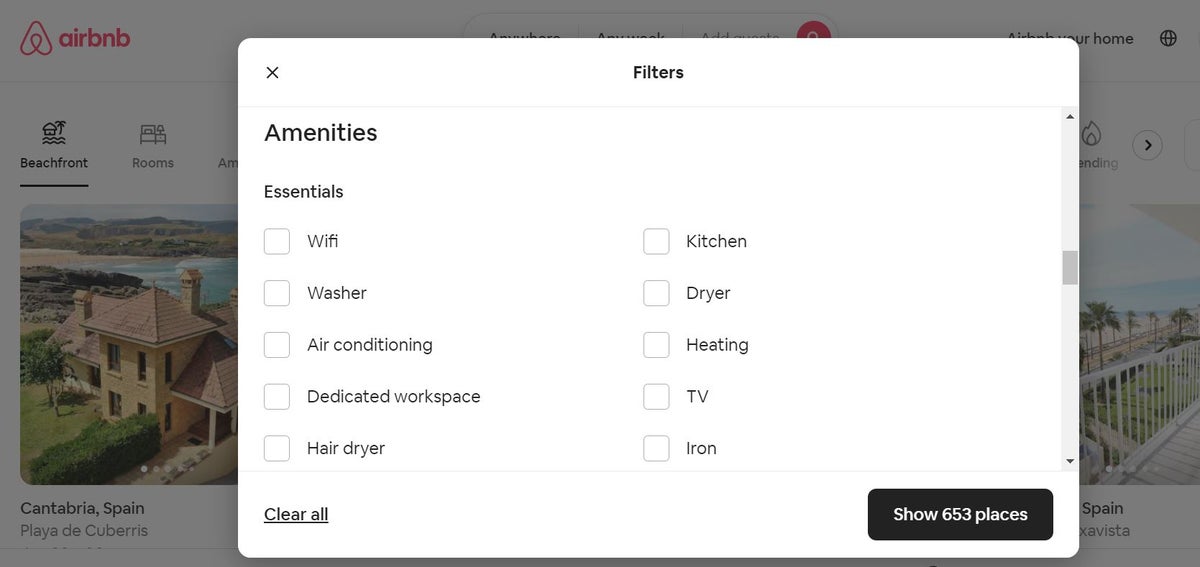
Some vacation rentals also offer long-term discounts for week or month-long stays that can make them more affordable for bleisure travelers. Some may even have multiple work areas, relaxing outdoor spaces, or office supplies, or are kid- and pet-friendly so you can take the whole family along. VRBO allows users to filter properties by “family-friendly,” ideal for bleisure travelers who want amenities for the kids like high chairs, cribs, play areas, etc.
It’s always a good idea to read reviews and see what people say about working remotely at a given property. Message the host to check the Wi-Fi speeds, too!
One senior marketing executive at a New York City-based media agency told us he loved a recent bleisure trip to Mexico, thanks to an incredible rental he was able to find. He was there for almost 4 months, working during the week and taking long weekends to relax, unwind, and discover more about the local culture. “The most important amenities to me were speedy Wi-Fi and organizing with the host to have a weekly cleaner, with whom I was able to chat and practice my Spanish. It felt like home and was the perfect place to decompress and have a vacation after long work days,” he said.
If you’re a host, make sure to update your listing and explain why it’s a great fit for business or bleisure travelers, take photos that accurately reflect workspaces (extra points for Zoom-friendly backgrounds) and leisure amenities, and offer discounts for longer stays . You can even include words like “leisure,” “business,” “digital nomad,” or “remote work” in the description. Extra amenities, such as complimentary office supplies or well-stocked kitchens, can go a long way, too.
Every bleisure trip is different, of course, but it’s best to pack day-to-night pieces that can work for both a meeting and a leisure activity, like dinner or a stroll around town. Obviously, weather and destination are both big factors when it comes to packing, but packing layers is a good idea, as well as pieces that can pull double duty. A mix-and-match capsule wardrobe that works for a variety of occasions and situations is key.
When in doubt, make sure you concentrate on business wear because it’s a lot easier to pick up a swimsuit coverup or sunglasses at the hotel gift shop or in town than it is to find a perfectly tailored suit. Don’t forget any gear you’ll need for work, like a mouse, chargers, microphone, headphones, etc., and throw in your favorite vacation items, too, like that beloved baseball cap and a good poolside read.
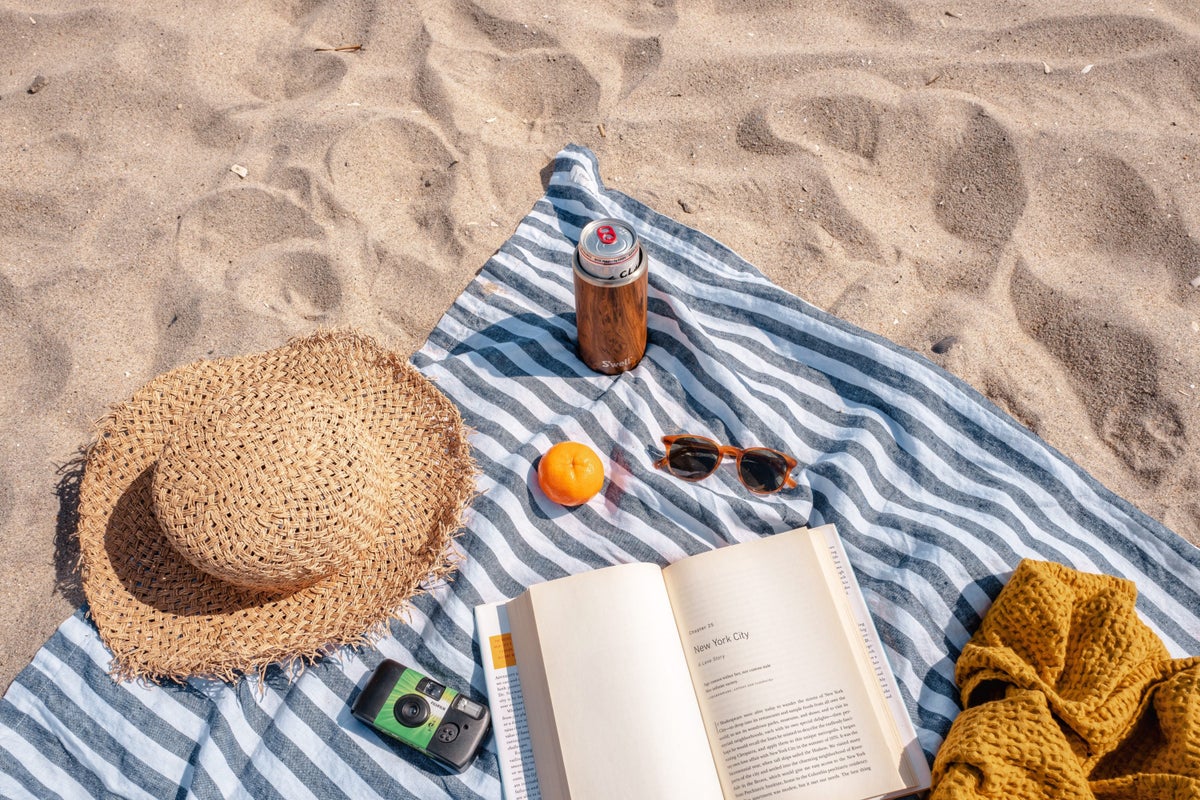
Bleisure travel is trending, and we don’t see it going anywhere anytime soon . As Ms. Chaulet put it, “Bleisure is much more convenient today,” and we couldn’t agree more. Take advantage of that company-funded plane ticket and add on a few vacation days after a business trip. You’ll likely return home a healthier and happier employee.
The information regarding The World of Hyatt Credit Card was independently collected by Upgraded Points and not provided nor reviewed by the issuer.
For rates and fees of the Marriott Bonvoy Business ® American Express ® Card, click here .
Frequently Asked Questions
What are the benefits of bleisure.
Bleisure travel has numerous benefits. To start, it can benefit the traveler, because they can save money and time while having leisure and vacation time during a work or corporate trip. It also helps companies, as employees are happier and better rested after a bleisure trip. Finally, hotels can benefit from customers staying longer by adding additional days to a corporate trip, event, or meeting.
What is the concept of bleisure?
Bleisure is the combination of business and leisure travel. It refers to anyone that takes a work trip but also enjoys a vacation, too. Post-pandemic, bleisure travel has become very popular, as flexible work schedules make the concept easier to manifest.
What is the difference between workcation and bleisure?
A workcation isn’t as great as it sounds. It happens when you take a vacation but end up doing work. In contrast, a bleisure trip is taking a work trip and adding an element of vacation to it.
What does bleisure mean in tourism?
Bleisure is the combination of 2 types of travel: business and leisure. Bleisure travelers usually work or are in meetings during the day, but enjoy tourism during the vacation element of their trip.
Was this page helpful?
About Lori Zaino
Lori is an intrepid traveler who loves creating itineraries that exude “luxe on a budget.” She’s written for CNN, NBC, The Infatuation, and more, and loves to muse about points-fueled trips to Sri Lanka, Sicily, and Myanmar.
INSIDERS ONLY: UP PULSE ™

Get the latest travel tips, crucial news, flight & hotel deal alerts...
Plus — expert strategies to maximize your points & miles by joining our (free) newsletter.
We respect your privacy . This site is protected by reCAPTCHA. Google's privacy policy and terms of service apply.
Related Posts
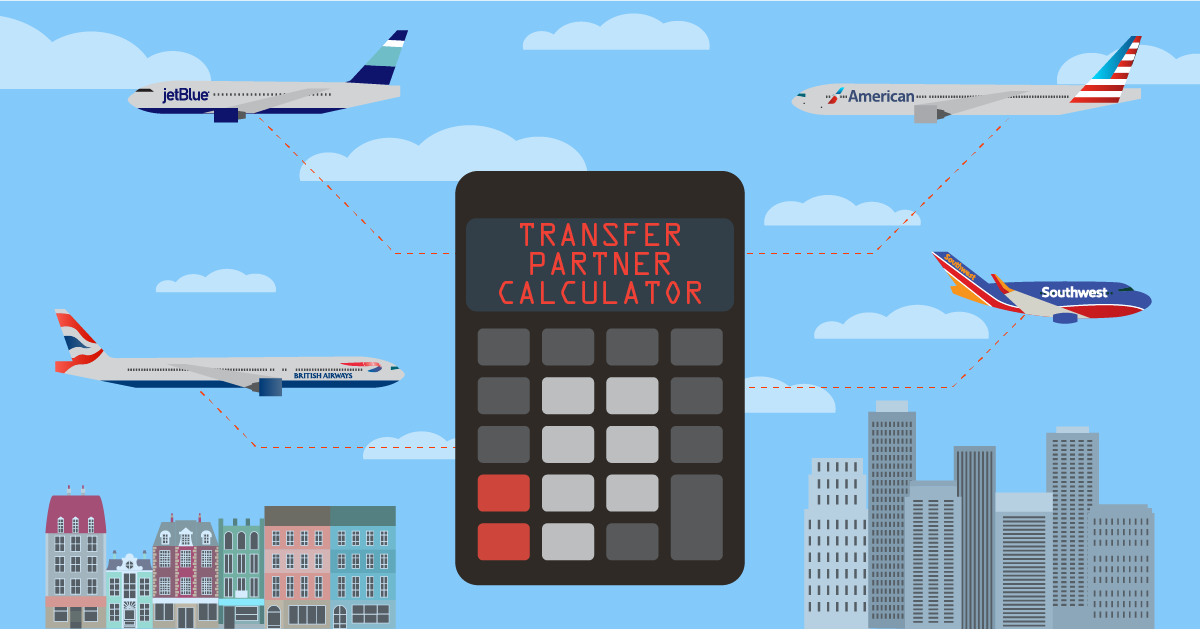
UP's Bonus Valuation
This bonus value is an estimated valuation calculated by UP after analyzing redemption options, transfer partners, award availability and how much UP would pay to buy these points.
- Share full article

Planning to Combine Business and Leisure Travel? You’re Not Alone.
As employees increasingly add leisure time to their business trips, companies are trying to figure out where their duty of care obligations begin and end.
Credit... Aart-Jan Venema
Supported by
By Amy Zipkin
- April 7, 2024
On a Sunday in late January, Melinda Buchmann, who lives in Florida and supervises client relations for RevShoppe, a 30-person remote company advising organizations on sales techniques and strategies, arrived in Banff, Alberta, to help set up a four-day company meeting.
The last day of the event, her husband, Josh, a director of strategic partnerships for the delivery company DoorDash , who also works remotely, joined her. They spent two leisurely days hiking in Banff National Park and visiting Lake Louise.
“I take advantage, because I don’t know when I’m going to return,” Ms. Buchmann said of the decision to combine downtime with a business trip.
As postpandemic work life has changed, and arrangements now include full-time office attendance as well as hybrid and remote work, so, too, has business travel. The phenomenon known as bleisure, or blended business and leisure travel, was initially embraced largely by digital nomads . But such combined travel is now also popular with people outside that group . Allied Market Research, a subsidiary of Allied Analytics, based in Portland, Ore., estimated that the bleisure travel market was $315.3 billion in 2022 and would reach $731.4 billion by 2032.
As employees increasingly add leisure time to their business trips, companies are struggling to determine where their legal obligation to protect employees from harm — their so-called duty of care — begins and ends. And workers may think that because their trip started with business, they will get all the help they need if something goes wrong on the leisure end. Instead, they should generally consider the leisure part of a trip as a regular vacation where they cover all expenses and contingencies.
Companies are responsible for knowing where their employees are during a business trip, covering expenses if an accident or emergency occurs, securing new lodging if a hotel is damaged, even swapping out a broken down rental car. Still, it’s not entirely clear if that coverage ends completely after the conference or the last client meeting.
Companies recognize that threats are increasing, said Robert Cole, senior research analyst focusing on lodging and leisure travel at Phocuswright, a market research company. They are trying to figure out how to take care of a valuable company resource, the employee, without leaving themselves open to financial risk or potential litigation.
“Crafting a comprehensive policy that balances business objectives, employee well-being and legal considerations can be challenging,” Nikolaos Gkolfinopoulos, head of tourism at ICF, a consulting and technology services company in Reston, Va., wrote in an email.
Employees may be on their own without realizing it and may be surprised by out-of-pocket expenses if they require hospital care abroad or evacuation, said Suzanne Morrow, chief executive of InsureMyTrip , an online insurance travel comparison site in Warwick, R.I.
Ms. Morrow said medical coverage provided by a company “is generally only for the dates of the actual business trip abroad.” If travelers are extending the trip for personal travel, she added, “they would want to secure emergency medical coverage for that additional time abroad.”
Employers and employees are left to figure out when the business portion of the trip ends and the leisure segment begins, a significant detail if an employee has a medical emergency. “Where does the corporation liability end?” said Kathy Bedell, senior vice president at BCD Travel, a travel management company.
Companies have varying policies to deal with the new travel amalgam. The chief executive of RevShoppe, Patricia McLaren, based in Austin, Texas, said the company provided flexible travel options and allowed employees to work anywhere they choose.
Even so, there are constraints. The company requires all employees, including executives, to sign liability and insurance waivers when they are on a voluntary company-sponsored trip, such as an off-site meeting. Such waivers typically place responsibility on employees for their own well-being. And if they bring someone, they are responsible for that person’s expenses.
Employees are responsible for requesting the paid time off and notifying their managers of their whereabouts, although that part is not a requirement. Managers have to ensure adequate staffing, Ms. McLaren said.
Elsewhere, employees may not bother to mention the leisure portion of their trip. Eliot Lees, a vice president and managing director at ICF, said he had been on trips as a child with his parents when they combined business and leisure. His parents were academics, who would piggyback vacations onto conferences.
Now he does the same. “I don’t think I ever asked for approval,” he said. (ICF has no formal business-leisure travel policy. It’s allowed as part of personal time off.) After a conference in the Netherlands last year, he spent four days hiking in the northern part of the country.
“I go anywhere, and take more risks than I should,” he said. He said he didn’t carry personal travel or accident insurance.
Any nonchalance may quickly evaporate if a threat emerges. Security experts say even low-risk locations can become high-risk for a few days or weeks of the year.
“Companies are concerned about losing visibility into a traveler’s whereabouts if they booked flights and hotels outside their corporate travel management company,” Benjamin Thorne, senior intelligence manager in London for Crisis24, a subsidiary of GardaWorld, wrote in an email. “The company may think the traveler is in one city when, in reality, they could have booked a holiday package to another nearby city. This lack of visibility by the company makes it difficult to support travelers when a disaster occurs.”
He also raised the possibility that “a traveler with bleisure travel reservations and expectations may find their work trip canceled due to changes in the risk environment or company policy, disrupting their leisure plans.”
Will a company step in off hours if there’s a problem? “That depends on how you are booked,” Mr. Cole, the senior research analyst at Phocuswright, said. A rule of thumb is the further you get from corporate control, the greater the gray area gets.
Half of GoldSpring Consulting’s clients take the responsibility for the entire trip, said Will Tate, a partner at the consultancy based in Cross Roads, Texas, and a certified public accountant. They don’t want the reputational risk. The other half say: “The business trip ended Friday. That’s when we end our duty of care.”
Some companies are trying to define and narrow the gray area. “If you are clearly on personal time, there is no legal requirement for your employer to provide for you,” said Nicole Page, a lawyer whose practice includes employment law at Reavis Page Jump in New York.
Uber provides employees with advisories before a trip, travel assessments, safety tips while traveling and emergency travel assistance, including medical aid, airport travel support, urgent and emergency assistance, and lost or stolen personal property insurance whether they are on business or pleasure travel or a combination.
And at DoorDash, Chris Cherry, head of global safety and security, wrote in an email that “while personal travel is not something we track, we have received requests to extend our travel support capabilities to personal travel.” Mr. Cherry said in those cases, the company has manually added employee leisure itineraries to its travel risk management system and “provided the same level of overwatch that we do for regular business travel.”
The Buchmanns plan to travel this month to Barcelona, Spain, for the McDonald’s Worldwide Convention. DoorDash will have a booth, and Mr. Buchmann will work on the exhibit floor and also entertain clients.
Ms. Buchmann will accompany him. She plans to go sightseeing in the morning, and work in the afternoons and evenings Barcelona time. She will also take three days of paid time off and has shared her plans with Ms. McLaren, the RevShoppe chief executive.
They will stay a day after the conference and plan to visit the Dalí Theater and Museum in Figueres. “I’m sure there will be no shortage of tapas and window shopping along way,” Mr. Buchmann said. He expects to be back at work the next Monday.
Explore Our Business Coverage
Dive deeper into the people, issues and trends shaping the world of business..
TikTok Has Changed America: Has there ever been an app more American seeming than TikTok, with its messy democratic creativity, exhibitionism, utter lack of limits and vast variety of hustlers?
Subscribe. Watch. Cancel. Repeat.: Many more people are jumping from one streaming subscription to another, a behavior that could have big implications for the entertainment industry.
Manischewitz Courts a New Generation: The 136-year-old company’s products have been staples in American Jewish households for generations . After a major rebranding, the matzo ball soup comes with merch.
Inside Novo Nordisk: The company’s factories work nonstop turning out Ozempic and Wegovy, its blockbuster weight-loss drugs, but the Danish company has far bigger ambitions, including transforming a small Danish town .
Golden Visa Programs: Spain is the latest European country to end its program, which brought in billions of euros from real estate investors but worsened a housing crisis for locals.
Reshaping Discount Shopping: Pinduoduo, the Chinese discount shopping app , appeals to people seeking deals and “downgraded spending.”
Advertisement
The World’s Leading Membership and Leisure Travel Company
Travel + Leisure Co. is the world’s leading membership and leisure travel company, with nearly 20 travel brands across its resort, travel club, and lifestyle portfolio. The company provides outstanding vacation experiences and travel inspiration to millions of owners, members, and subscribers every year through its products and services: Wyndham Destinations, the largest vacation ownership company with more than 245 vacation club resort locations across the globe; Panorama, the world’s foremost membership travel business that includes the largest vacation exchange company and subscription travel brands; and Travel + Leisure Group, featuring top travel content and travel services including the brand’s eponymous travel club. At Travel + Leisure Co., our global team of associates turns vacation inspiration into memorable travel experiences year after year.
Our Mission
We put the world on vacation.
Travel drives our company, our careers, and the lives of our customers. We recognize that vacations deliver some of life’s best memories, and we are here to help customers make the most of this world.

The execution of our strategy is firmly anchored by our culture — the foundation of the shared values, competencies, and spirit of our global team. Aligned with our vision to put the world on vacation, our values are the HEART of our company:

Discover Our World
Get insight into our leadership team, brand portfolio, and charitable efforts.
Creating Our Roadmap to Success
Over time, we have been transforming and acquiring some of the most iconic vacation and travel-related businesses to become the world’s leading membership and leisure travel company. In 2018, we established Wyndham Destinations, Inc. and spun off our hotel business into a separate publicly traded company, Wyndham Hotels & Resorts. While they are two separate entities, we have long-term exclusive license agreements to retain our connection with Wyndham Rewards, one of the top loyalty programs in the hospitality industry. Since then, we have also acquired Alliance Reservations Network and the iconic Travel + Leisure brand.
1970s-1980s
Capitalizing on the subscription model trend.
Subscription-based revenue has been on the rise in the past decade 1 . Seventy-nine percent of adults in the U.S. belong to a subscription service 2 . With consumers desiring to travel near and far, we connect people with places they never dreamed of visiting through strategic vacation ownership and subscription-based travel models.
Households of Vacation Lovers
Households of Subscription Lovers
Households of Timeshare Lovers
1 BMC/Mercatus survey, 2 Zuora, 3 ARDA, 4 Timeshare Consumer Guide, 5 Euromonitor
As of Sept. 10, 2021 • Travel + Leisure Co. Investor Day Presentation, September 2021
Our Portfolio of Global Brands
With a diverse portfolio of resort, membership, and lifestyle travel brands within the Travel + Leisure Co. family, we bring people together and inspire them to discover the world’s greatest escapes. We put the world on vacation!
Experienced Leaders at the Helm
Our veteran leadership team provides knowledge that propels the company’s growth while ensuring that our practices align with our values.
Get In Touch with Us
Are you interested in learning more about our brands? Reach out to us today.
CURATED TRAVEL & LEISURE ITINERARIES
Bringing the expertise of travel + leisure to life, our editors hand-picked the dreamiest destinations, hotels, and experiences to curate these customized itineraries. with travel + leisure go, you’ll enjoy preferred pricing when you book..
HAND-PICKED HOTELS
SELF-GUIDED
SPECIAL PERKS
INSIDER'S TIPS
SIP + SAVOR
Sit back, relax, and pour another glass. california's beloved wine country is a must-see destination for lovers of wine, food, and the outdoors., explore all itineraries, popular itineraries, explore and book these expertly curated itineraries in top destinations worldwide., city itineraries, on a city vacation, culture is center stage. discover food, art, theater, music, architecture, history, and more - all while getting the best travel deals from travel + leisure go..

BEACH ITINERARIES
Soft sand, shady palms, a cold drink, and warm surf - what more could you want find yourself basking in the sunshine in top beach destinations., outdoor itineraries, fashion week itineraries, bold looks. latest trends. immerse yourself in the dazzling designs from iconic brands during the biggest events in the fashion industry..
U.S. Leisure Travel Is Back at Pre-Pandemic Levels for the First Time
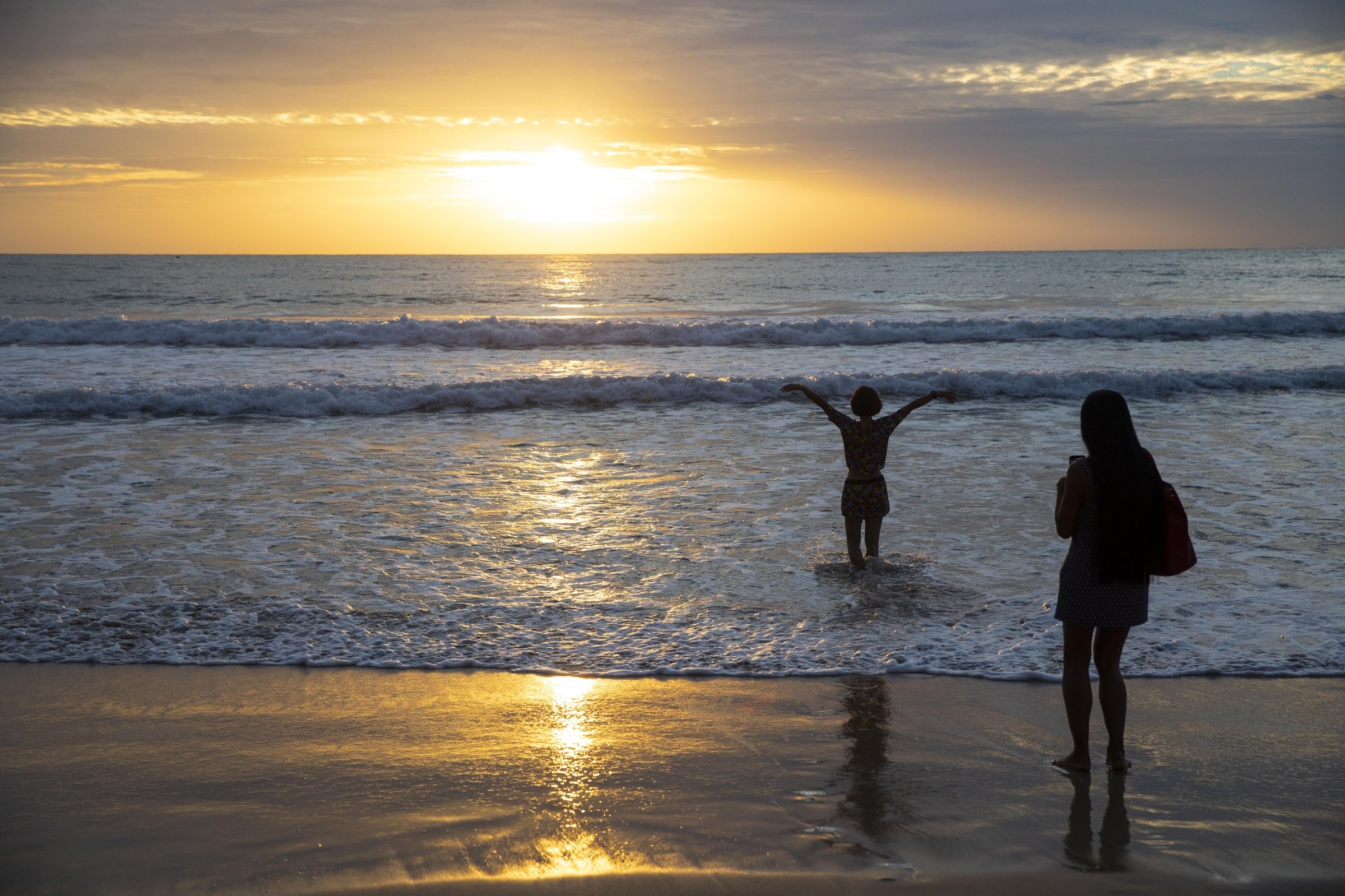
US consumers are spending less on products and more on experiences — a trend that could ease supply snags and inflationary pressures, and help the travel industry this summer.
For the first time since COVID halted movement around the world, leisure travel has returned to 2019 levels, according to a report released by the Mastercard Economics Institute. People are feeling more comfortable heading off to far flung adventures, despite a surge in cases and average airfares jumping 18% globally since the start of the year.
“If flight bookings continue at their current pace, an estimated 1.5 billion more passengers globally will fly in 2022 compared to last year,” the report said, “with Europe seeing the biggest increase — about 550 million.”
Read More: What to Do If You Test Positive for COVID-19 While Traveling
Short and medium-haul flights are up 25% and 27% in April over the same period in 2019. Long-haul trips, which started the year 75% below pre-pandemic levels, rebounded to just 7% below 2019 by the end of April. Passenger rail is similarly close, with buses back to where they were. Spending on cruises started the year 75% off the 2019 peak and are now just 10% shy of a full recovery.
Pent-up demand for experiences appears to be driving the wanderlust with tourist spending on nightclubs and bars up 72% above 2019 levels, restaurants up 31%, and other recreational activities like museum, concerts and amusement parks up 35%, according to the report. By comparison, tourist spending is down for retail goods like clothes and cosmetics.
The report found the most popular international destination in March for travelers leaving North America was Mexico, and departing Europe, Middle East and Africa, was the UK. The US tops the list for those traveling from Latin America, the Caribbean, and the Asia-Pacific regions.
More Must-Reads From TIME
- The 100 Most Influential People of 2024
- Coco Gauff Is Playing for Herself Now
- Scenes From Pro-Palestinian Encampments Across U.S. Universities
- 6 Compliments That Land Every Time
- If You're Dating Right Now , You're Brave: Column
- The AI That Could Heal a Divided Internet
- Fallout Is a Brilliant Model for the Future of Video Game Adaptations
- Want Weekly Recs on What to Watch, Read, and More? Sign Up for Worth Your Time
Contact us at [email protected]
- Appointments
- Corporate Connect
- Discover Your India
- Explore the world
- Food Voyager
- Hotels & Resorts
- Lifestyle, Weddings & Wellness
- Today's Traveller Awards
- Today's Traveller Interviews

- Today’s Traveller Awards
- Today’s Traveller Interviews
Exploring 2023: New trends top Leisure Travel
Halfway through 2023 and there is a continued resurgence of leisure travel, coupled with an array of new trends that reflect the desires and priorities of modern travellers..
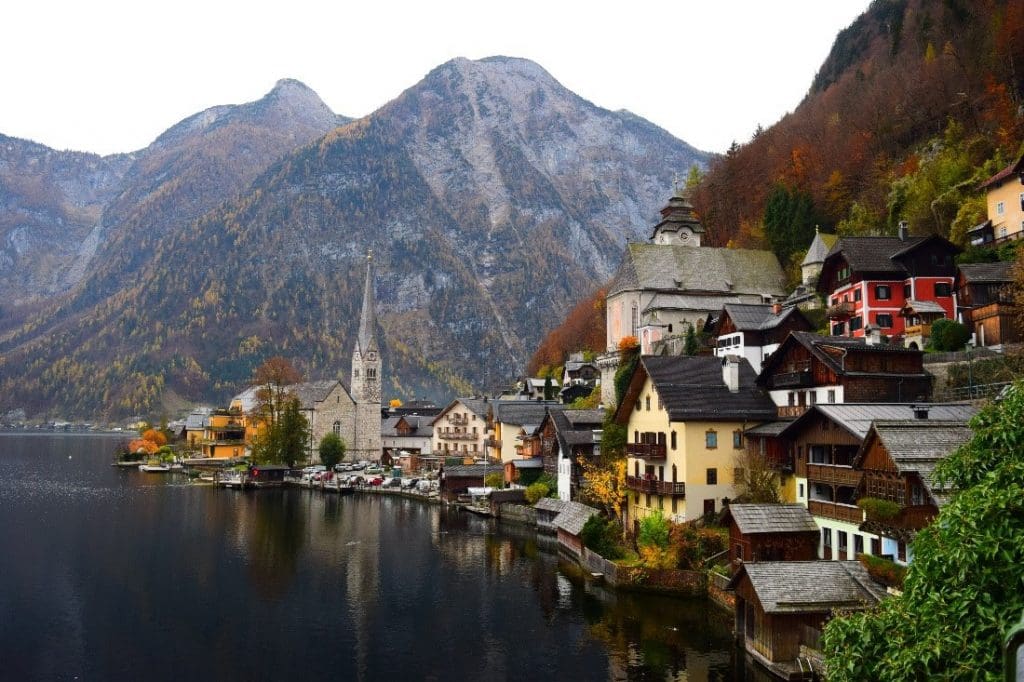
The world of leisure travel finds itself at an interesting crossroads. Gone are the days when travel was simply about the destination. Today, it’s an intricate mix of experiences, innovations, and changing traveller expectations.
From eco-conscious getaways to immersive digital escapades, the landscape of exploration is being redefined, with boundaries expanding further than ever before. Here are the top shifts in leisure travel, and discover how 2023 is rewriting the traveller’s tale, one transformative trend at a time.
Let’s delve into some of the hottest travel trends this year:
Sustainable tourism.
With an increasing global emphasis on environmental preservation, travellers are more conscious about their ecological footprint. Many are opting for eco-friendly accommodations, engaging in voluntourism, and selecting destinations committed to conservation efforts. This has led to a surge in eco-resorts, biodegradable travel products, and even travel itineraries that benefit local habitats.
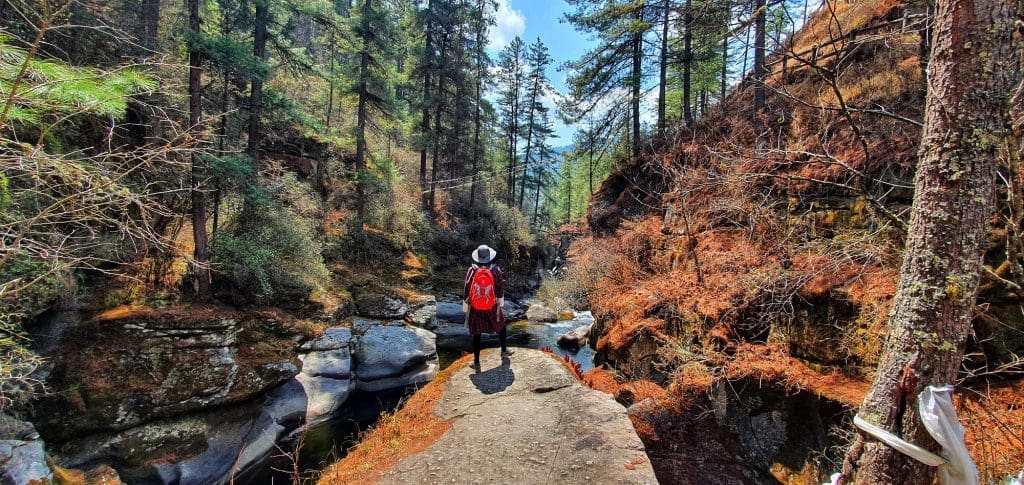
One can witness the commitment to sustainable tourism in practices like Costa Rica’s eco-lodges, which emphasize harmony with the surrounding rainforest while offering tourists a unique connection to nature. Similarly, in Bhutan, a country known for measuring Gross National Happiness over GDP, the government strictly controls tourism numbers to ensure minimal environmental and cultural impact.
The Galápagos Islands have taken a similar approach, imposing strict visitor limits to protect its unique biodiversity. Meanwhile, community-based tourism initiatives in places like Thailand empower local villages by allowing them to share their way of life with visitors, ensuring that the revenue generated benefits the community directly.
Across the globe, from the ancient pathways of the Camino de Santiago in Spain to the national parks of Kenya, sustainable tourism practices are not only preserving precious ecosystems and cultures but also providing richer, more authentic experiences for travellers.
Digital Detox Retreats
The ‘always connected’ lifestyle has spurred a new kind of vacation – digital detox retreats. These are travel experiences that encourage visitors to unplug from their digital devices, offering them a genuine break from the virtual world. Such retreats might be found in remote areas without Wi-Fi or even in dedicated resorts with no-screen policies.
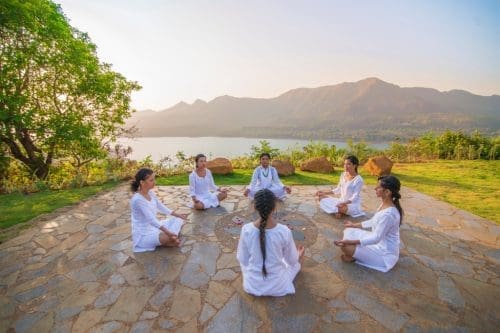
Nestled in the serene landscapes of California’s Big Sur, Esalen Institute offers retreats that encourage visitors to unplug, connect with nature, and delve deep into holistic wellness practices. Over in the UK, the idyllic countryside serves as the backdrop for retreats where attendees surrender their devices upon arrival, replacing screen time with nature walks and meditation.
Meanwhile, the remote forests of Scandinavia have become sanctuaries for those seeking a respite from the digital world, with lodges emphasizing mindfulness practices and deep connections with the natural world. Tucked away in the lush foothills of the Himalayas, Vana Retreat in Dehradun provides the ideal setting for a digital detox experience. Vana is founded on the philosophy of holistic wellness which goes beyond just physical healt h, encompassing mental, emotional, and spiritual well-being. The retreat offers Ayurvedic treatments, Tibetan healing, and traditional yoga sessions in their 21-acre estate.
These retreats spread across different continents, share a common purpose: to provide harried souls a chance to disconnect from the digital realm and reconnect with themselves and the world around them.
Hyper-local Experiences
Today’s travellers seek genuine, immersive experiences. Rather than just sightseeing, they want to dive deep into local cultures, learn indigenous crafts, enjoy traditional music, and taste authentic cuisines. Many tour operators now collaborate directly with local communities to offer these enriching experiences, ensuring that travel revenues also benefit local economies.
In the winding alleys of Marrakech, Morocco, travellers can participate in traditional cooking classes with local families, using ingredients sourced from neighbourhood markets to prepare age-old recipes.
Over in Tuscany, Italy, agriturismo stays offer tourists a taste of rustic farm life, complete with vineyard tours, homemade wine tastings, and meals prepared with fresh produce from the garden. Meanwhile, in Kyoto, Japan, local artisans open their workshops to share the intricate processes behind crafts like Kiyomizu pottery or Nishijin weaving.
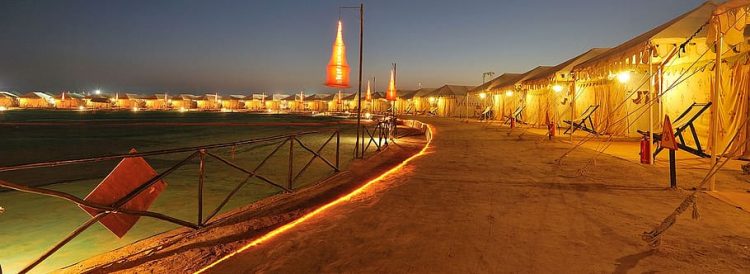
In the vast salt desert of the Kutch region in Gujarat in India lies the spectacle of the Rann Utsav. This cultural festival is a celebration of the region’s heritage, art, music and dances. Guests stay in traditional “Bhunga” huts, which are circular mud huts adorned with local crafts and enjoy folk performances under the moonlit sky, taste the authentic Kutchi cuisine, and immerse themselves in handicraft workshops led by local artisans. The highlight is undoubtedly the surreal white expanse of the salt desert, which glistens under the full moon, creating an awesome experience.
Such hyper-local experiences allow travellers to immerse themselves deeply into a destination’s culture and lifestyle, moving beyond typical sightseeing to form genuine connections with places and people.
Space Tourism
As futuristic as it sounds, 2023 has seen significant advancements in space tourism. Companies like Blue Origin and SpaceX have laid the groundwork, making suborbital flights more accessible to civilians. The allure of seeing Earth from space has made this an incredibly sought-after, albeit premium, travel experience.

Pioneers like SpaceX are making strides towards commercial spaceflights, with plans to ferry civilians on orbital jaunts around the Earth. Richard Branson’s Virgin Galactic, after years of anticipation, has already taken private passengers on suborbital voyages, offering them breathtaking views of Earth against the vastness of space.
Meanwhile, Blue Origin, founded by Jeff Bezos, has successfully launched missions giving travellers a few minutes of weightlessness in space before a parachute-assisted landing. Beyond just flights, visionary projects propose lunar resorts in the near future, where guests can experience the moon’s barren landscapes firsthand. As technology continues to advance and costs begin to decrease, the dream of space tourism is moving closer to becoming an attainable adventure for many.
Slow Travel
The rush of ticking off destinations from a bucket list is fading. In its place, ‘slow travel’ is emerging, where travellers spend more extended periods in one location, deeply exploring and understanding its essence. This approach is more sustainable and allows for a deeper connection to a destination.
Slow travel is a movement that urges travellers to slow down and immerse themselves deeply into their chosen destinations. In the picturesque countryside of France, many opt for canal boating, where days are spent meandering through gentle waterways, punctuated by leisurely stops at quaint villages.
In Spain, the Camino de Santiago offers a time-honoured pilgrimage route, where the journey itself, often undertaken on foot, becomes as significant as the destination. Italy’s Tuscany region, with its rolling hills and vineyards, invites travellers to stay in rustic villas, savouring local wines, and adopting the leisurely pace of rural life.
And on the Trans-Siberian Railway, the landscapes of Russia unfold gradually, allowing passengers the time to absorb and reflect upon the vast terrains and cultures they traverse.
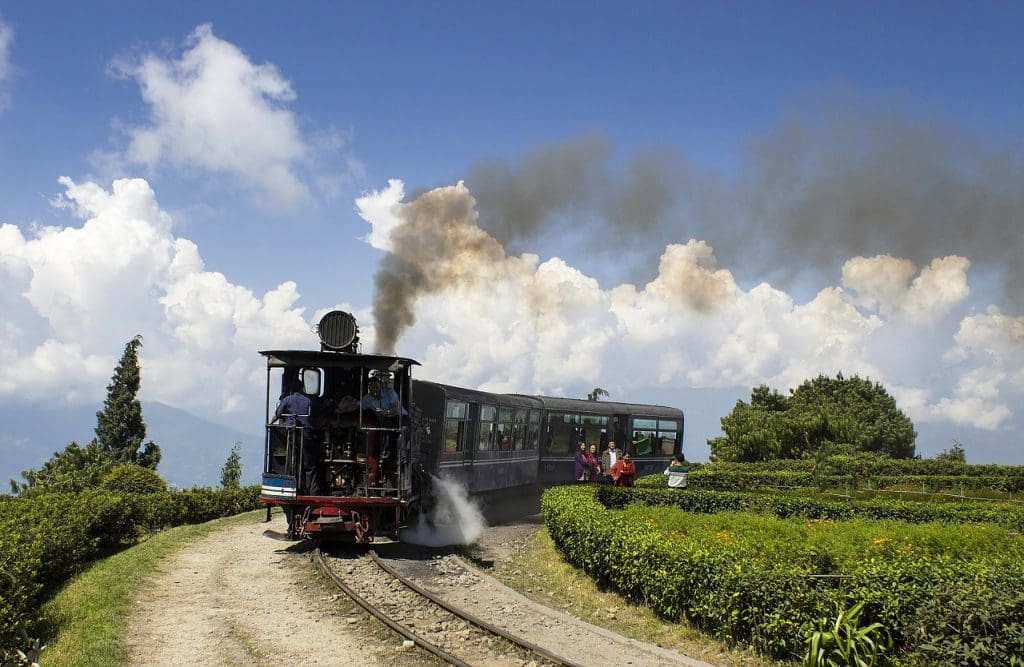
In India, chugging along the picturesque slopes of the Eastern Himalayas, the Toy Train of the Darjeeling Himalayan Railway offers a unique slow travel experience. Established in the 1880s, this UNESCO World Heritage site takes travellers on a nostalgic journey through vistas of terraced tea gardens, dense forests, and majestic peaks. With frequent stops at quaint stations, the journey allows one to immerse in the region’s colonial charm, interact with locals, and appreciate the slower rhythms of mountain life.
In each of these instances, slow travel champions the idea of connection over mere consumption, prioritizing experiences over checklists.
Flexible Workcations
With remote work becoming the norm for many, combining work and vacations – termed ‘workcations’ – is on the rise. Travellers are booking longer stays in destinations with robust Wi-Fi and serene environments, blending the line between leisure and work.

Bali, with its idyllic beaches and co-working spaces, has become a haven for digital nomads seeking to balance work with surf sessions and yoga retreats. Over in the bustling streets of Chiang Mai, Thailand, professionals set up temporary bases in cafes, benefiting from the city’s rich culture and affordable living costs after office hours.
The Portuguese town of Ericeira, recognized as a World Surfing Reserve, sees a melding of business meetings and wave-catching, all in a day’s work. And in the mountainous backdrop of Medellín, Colombia, remote workers find inspiration amidst the city’s verdant landscapes, punctuating work hours with trips to local markets or nearby coffee plantations. These destinations exemplify the allure of workcations, enabling professionals to seamlessly blend productivity with exploration and leisure.
Health and Wellness Travel
The pandemic made everyone more health -conscious. This consciousness has translated into travel, with many tourists choosing destinations offering wellness retreats, spa treatments, meditation courses, and yoga sessions amidst nature.
This shift in consciousness has seamlessly woven itself into the fabric of travel. Destinations that offer wellness retreats have surged in popularity, catering to this burgeoning demand. These retreats often encapsulate a spectrum of health-focused offerings, from rejuvenating spa treatments that utilize ancient therapeutic traditions to meditation courses designed to soothe the modern mind.
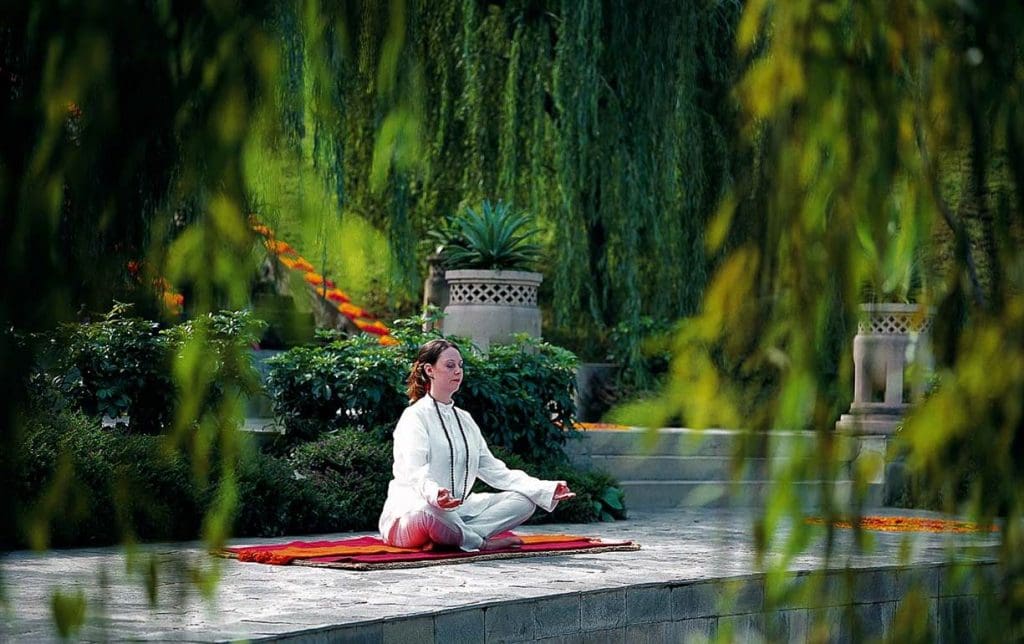
Yoga sessions, a practice that harmonizes physical, mental, and spiritual well-being, are frequently held in serene natural settings, allowing participants to draw a profound sense of peace from their surroundings.
A wonderful example is Ananda, a haven of holistic wellness and spiritual rejuvenation centre in the foothills of the Himalayas. Melding ancient Indian healing practices with luxury, this retreat invites guests to embark on a transformative journey of mind, body, and spirit. Set within a Maharaja’s palace estate, Ananda seamlessly combines Ayurveda, yoga, and meditation, thus offering an oasis of tranquillity against the backdrop of lush forests and the sacred Ganges River.
Furthermore, these wellness journeys are often complemented by organic and nutritious culinary offerings, ensuring that travellers are nourished from the inside out. As the world moves forward, the intersection of travel with health and wellness promises to redefine the contours of tourism , crafting experiences that leave travellers enriched, revitalized, and deeply transformed.
Solo Female Travel
Empowered women around the world are breaking societal norms and venturing out alone. The travel industry has responded with female-only tours, women-friendly accommodations, and safety apps, catering to this growing segment.
Solo female travel has evolved from a niche trend into a powerful movement, reflecting a broader societal shift towards independence and empowerment for women across the globe. This surge in solo female exploration can be attributed to a combination of factors: increased safety measures in many destinations, more women-centric travel groups and resources, and a digital age that keeps everyone connected and informed.
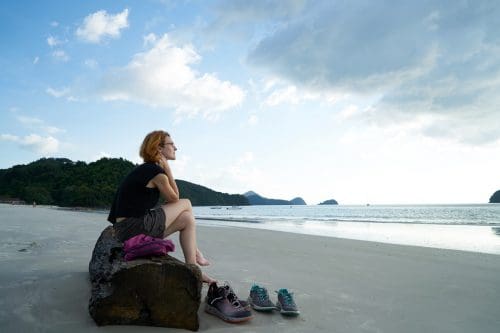
Social media platforms, particularly, have played a pivotal role, offering a space for solo female travellers to share their experiences, insights, and advice. These shared stories not only inspire more women to embark on their own journeys but also cultivate a supportive community where safety tips, destination recommendations, and cultural nuances are exchanged.
Many countries around the world have recognized the growing trend of solo female travel and have made efforts to cater to and ensure the safety of such travellers. Among them are Japan, New Zealand, Canada, Nordic countries,
Beyond Reality: The New Wave of Virtual Explorations
Virtual explorers don state-of-the-art VR headsets, breaking free from the confines of their urban dwellings. The vast terrains of Machu Picchu for instance, materialize, enveloping them in its mystique. They traverse the ancient Incan trails virtually, sensing an authentic connection to the majesty of the bygone era.
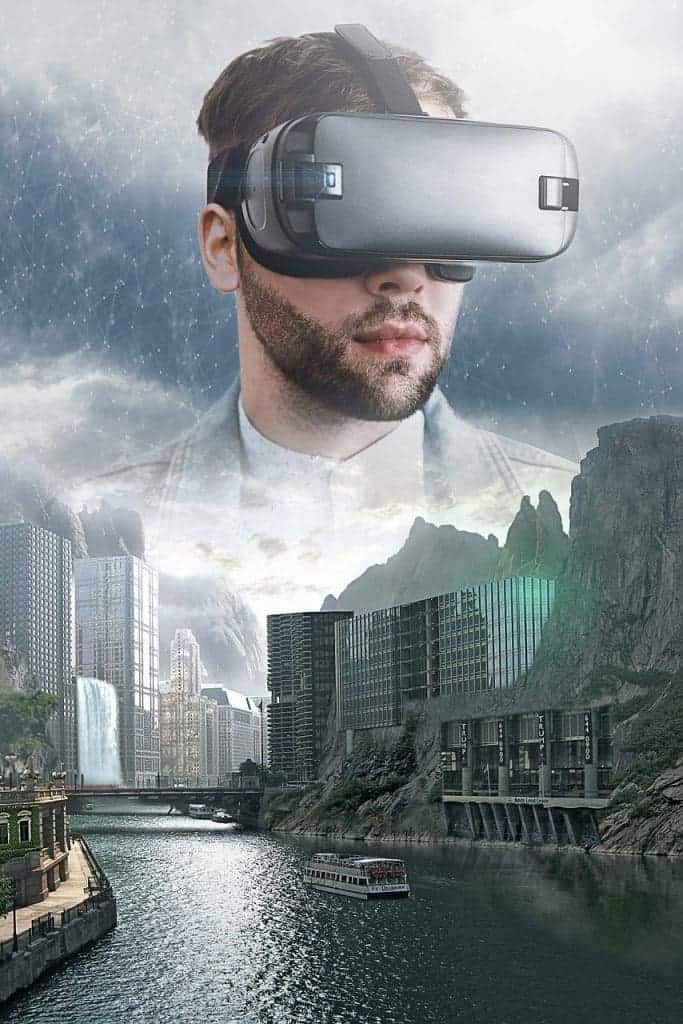
An interactive digital guide suddenly manifests, narrating the lore of a prominent structure they observe. This AR integration enriches their virtual odyssey, melding discovery with knowledge. For many of these digital wanderers, the synthesis of history and exploration is spellbinding, allowing them to delve deeper into the stories behind iconic landmarks.
From the mountainous beauty of the Andes, they transition to the quaint streets of Kyoto. As they saunter alongside the virtual Kamo River, an elegant traditional ryokan beckons. Zooming in, they can navigate its interiors, appreciate the tranquillity of its gardens, and sense the ambience of the surrounding neighbourhood. This experience feels akin to an immersive digital brochure, hinting at possible destinations for their future real-world adventures.
Some might use it as a precursor, previewing locations before an actual visit. For others, it’s an eco-friendly alternative, satiating their wanderlust without leaving a carbon footprint.
While virtual travel can’t completely replace the tangible and sensory-rich experience of physical travel, it offers an alternative for those who are constrained by time, budget, health, or even global crises. Moreover, it’s a sustainable way to explore the world, reducing the environmental impact that often comes with traditional travel. As technology continues to advance, the line between physical and virtual travel might become even more blurred, offering hybrid experiences that cater to a variety of traveller needs.
Going forward, Leisure travel trends highlight a shift towards more conscious, immersive, and personalized experiences. With sustainability at its heart and technology as its backbone, the future of travel promises to be exciting!
Read more: Latest
Our Social Presence

- Discover India
- Hotels & Resorts
- Lifestyle, Weddings & wellness
- Todays Traveller awards
- Todays Traveller Interviews
Quick Links
Our social networks.
US Travel Header Utility Menu
- Future of Travel Mobility
- Travel Action Network
- Commission on Seamless & Secure Travel
- Travel Works
- Journey to Clean
Header Utility Social Links
- Follow us on FOLLOW US
- Follow us on Twitter
- Follow us on LinkedIn
- Follow us on Instagram
- Follow us on Facebook
User account menu
Maintain robust growth in leisure travel demand.
Domestic leisure travel’s growth remains imperative for the industry’s full recovery.
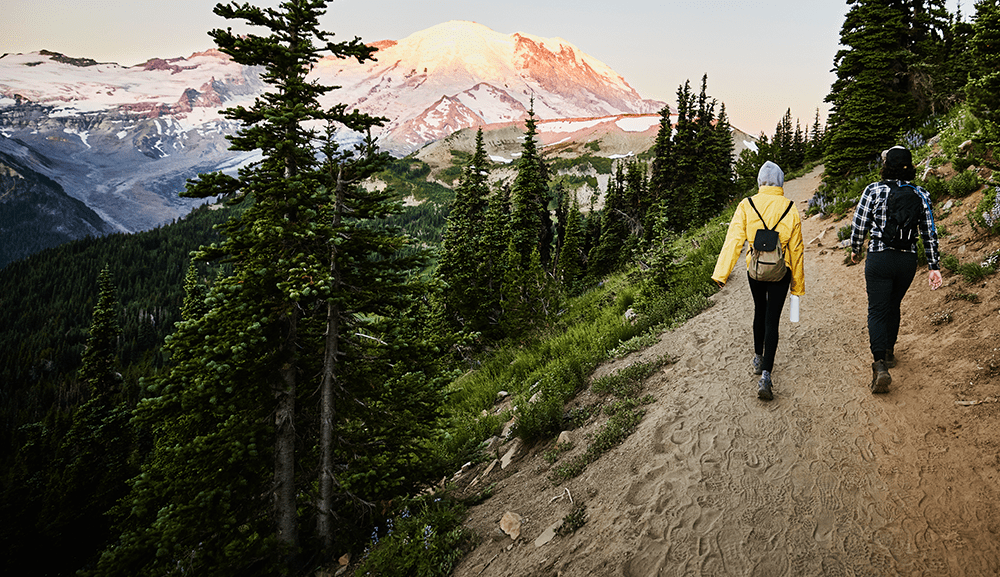
Why it matters: In 2023, domestic leisure generated $855 billion in travel spending.
What else: Our consumer insights data from Ipsos reveals that, while the majority of recent air travelers say they are at least somewhat satisfied with their overall travel experience (80%), less than one-third are very satisfied (32%), citing airport crowding and congestion and flight delays or cancellations as primary reasons.
- And, over half of Americans (52%) say they would travel more for leisure in the next six months if the travel experience was not as much of a hassle.
Demand for leisure travel cannot be guaranteed—and that’s why it’s imperative that the traveler experience at every stage be improved.
The bottom line: As we look to grow travel to and within the U.S., it’s essential that we invest in significant upgrades to our air travel system.
RECOMMENDATIONS

Enact a long-term FAA reauthorization bill
Nominate and confirm the assistant secretary of commerce for travel & tourism, develop a roadmap to modify the tsa liquids ban, key resource links.
U.S. Travel
For more information about this Issue, please contact us at:
202.408.8422
Research, News and Commentary on Maintain Robust Growth in Leisure Travel Demand

PRESS RELEASE Daily Getaways Returns with Travel Deals, Offers from Top Brands
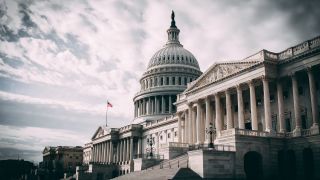
PRESS RELEASE U.S. Travel Mourns the Passing of Former Congressman William Delahunt

INTERACTIVE TRAVEL DATA Economic Impact
The Latest Travel Data

Monthly member-exclusive summary of the latest economic, consumer and travel indicators, trends and analysis featuring key highlights from the U.S. Travel Insights Dashboard.
Lodging Levies: Rates and Allocations

An in-depth examination of lodging levies and taxes across 105 diverse destinations, designed to shed light on how governments allocate tax revenue from the travel industry.
Travel Forecast
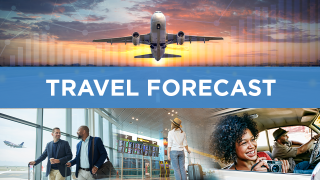
The latest forecast shows that international inbound and domestic business travel are still far from a full recovery. Although international travel to the U.S. is increasing, it remains below pre-pandemic levels. Business travel is expected to grow in 2024 but at a slower pace. Domestic leisure growth slowed due to reduced consumer spending amid higher borrowing costs, tighter credit conditions and the restart of student loan repayments.
Analysis on Global Competitiveness of American Travel

U.S. Travel's eye-opening study with Euromonitor found that the United States ranks second to last out of 18 top travel markets in terms of global competitiveness. Decades of underinvestment and a lack of federal focus caused the U.S. to fall behind, while other countries implement robust strategies to increase international visitation and grow economic output.
The Definition of a Leisure Traveler
Published on 20 Feb 2023
Travel is one of the most commonly listed interests of people, and it comes in all forms. Some people travel only when they need to visit relatives or friends, others travel on business, and some travel as a sort of spiritual discipline, to discover new things about the world and its cultures and to learn more about themselves in the crucible that is travel. Yet for some, none of these things is that important: to these people, travel is about fun and excitement, about rest and relaxation, and about whatever they want it to be about.
Identification
Leisure travel is travel in which the primary motivation is to take a vacation from everyday life. A leisure trip is often characterized by staying in nice hotels or resorts, relaxing on beaches or in a room, or sightseeing and experiencing local tourist attractions. Most meals are eaten out when traveling for pleasure, and often more expensive modes of transportation, such as taxis, are used to get around. In some cases, leisure travel might be used to refer to any trip that lasts more than a week, regardless of the primary focus. Leisure travel is generally seen as the opposite of business travel, which is purely done for business purposes or it could be a part of corporate travel. However, many people combine these travel opportunities to create bleisure travel, which is a combination of business and leisure.
Considerations
Leisure travel can be many things, but besides being a vacation, it doesn’t have to be any one of them. Although many leisure travelers spend more money than they would in their everyday life, others might choose to travel frugally. These backpacker leisure travelers might stay in hostels rather than a hotel room, cook their own meals and take public transit – as long as the main focus is on leisure, they are still leisure travelers. Similarly, a leisure traveler might make a business contact at a bar, acquire a new client, or work on a proposal for when she returns home. If the focus still is mainly on vacation, it is leisure travel.
It is becoming more common for people to take "working vacations," in which they split their time between work and play. Unlike a business trip, this sort of travel still incorporates many aspects of leisure travel. A number of tour agencies have begun offering "volunteer vacations," which combine aspects of the leisure travel lifestyle with volunteering one’s time to an organization in need. This type of traveling allows vacationers to enjoy the beauty of a new place while giving something back to it.
There are many benefits to leisure travel. Stepping outside of a busy lifestyle can give people space to unwind and release their stress, returning to their jobs and everyday lives rejuvenated and refreshed. It also can give people the opportunity to experience parts of the world they have never seen before, enriching their understanding of life on the planet. Traveling can be an excellent way to meet new people and make new connections, and leisure travel gives people the space and time they need to really forge those bonds.
Even for those unwilling to embark on truly budget leisure travel, the travel industry has many ways to limit costs. Popular leisure travel destinations will often see a wide swing in prices among hotels, restaurants, air travel, and activities, depending on the season. Locations in the Caribbean or Mediterranean, for example, might be twice as expensive during winter, as millions of visitors from Europe and the United States try to escape cold weather. However, national parks are usually free to enter if you are looking for a budget friendly destination.
Contacting a travel agent or online travel agency can help you schedule your travel experiences. They work closely with tour operators within the tourism industry in order to get you the best vacation possible.
Business Vs Leisure Travel: Knowing the Main Differences
Home » B2B » Business Vs Leisure Travel: Knowing the Main Differences
People travel for various reasons, like attending a family function, a job interview, a business meeting, seeking adventure, sightseeing, etc. We can broadly classify travelers into two groups. These are business travelers and leisure travelers. Tourist is a common term to describe people traveling for leisure. When comparing business vs leisure travel, one should know that the needs, objectives, and travel patterns of business and leisure travelers are radically different. Whether a leisure or business trip, the trip’s duration can range from less than 24 hours to a couple of months and everything in between. Leisure travel encompasses a broad spectrum of travel activities, including sports, entertainment, and recreation.
Who are leisure travelers?
Leisure travelers are people who travel for personal reasons such as vacations, marriages, etc. They can be divided into various groups such as family travelers, solo travelers, couples and more. The itinerary is highly flexible as individuals can take their own decisions without obligations of fulfilling a role.
Difference between business travel and leisure travel
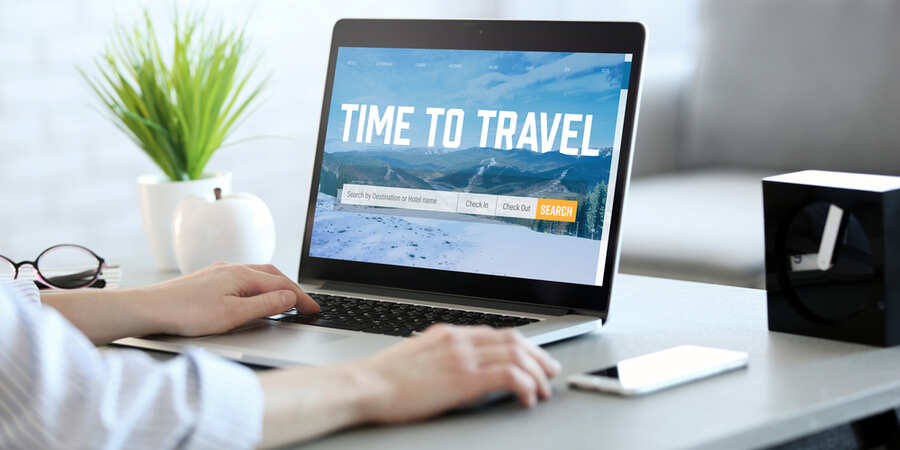
There is a big difference between business vs leisure travel. The former is carried out with a clear purpose of performing business related activities while leisure travel is done for relaxation and fun. However, there are numerous other differences. We can understand the differences between business vs leisure travel using the following main travel parameters:
1. Purpose of travel
Business travel involves traveling from one’s hometown or headquarters to one or more destinations and staying in hotel accommodations while there to meet clients and other business contacts before returning. The business traveler has a specific purpose, like sales, networking, customer service, project work, training, or conference participation. The purpose of leisure travel is to visit tourist destinations for a vacation. It mainly focuses on recreation and sightseeing. Adventure tourism is also part of leisure travel. People plan leisure travel with family or friends to escape the monotonous routine.
2. Flexibility in time and location
Business travelers have relatively limited flexibility when choosing a hotel or destination for business travel. It is because they need to adhere to a rigid schedule of meetings, appointments, and trade events. Business travelers most often book accommodations near the city center and therefore have a limited choice of accommodations. As business meeting schedules depend upon the availability and convenience of clients, business trips are not flexible in terms of timing. There is no seasonality in business travel, as employees travel on business throughout the year.
Since leisure travel involves recreation, adventure, and entertainment, destinations differ from business travel. They usually head to tourist locations like beaches and resorts rather than cities. The ideal time to travel for leisure is on weekends or vacations. Travel for leisure offers greater flexibility in terms of travel times and accommodations, as tourists do not have to follow strict schedules.
3. Travel cost considerations
Cost considerations are common in business and leisure travel. However, business travel involves a focus on returns on travel expenses. It makes business travel less price sensitive. Companies may allow employees to book business travel with some flexibility for cost consideration in the interest of employee travel experience.
Several studies confirm over 6 out of 10 leisure travelers are price sensitive, as there is no monetary gain from their travel, unlike business travel. Many leisure travelers do not mind postponing their travel plans for better deals on transportation and accommodation. They look for affordable tour packages that include groups of tourists for better cost-effectiveness.
4. Connectivity requirements
Connectivity is crucial for business travel as it helps ensure seamless communications with the office, clients, and line managers. Easy access to high-speed internet is necessary to hold online meetings and access a company’s online ERP system for reporting. Business travelers spend more time away from their near ones and need connectivity to stay in touch. They prefer booking hotels offering round-the-clock access to quality Wi-Fi connectivity. Leisure travel focuses on getting away from the routine, so connectivity is not crucial. Leisure travelers need internet access to book travel and explore tourist destinations online. They may not pay extra to get Wi-Fi facilities in hotels.
5. Hotel amenities
Hotel amenities differ according to whether you are traveling on business or for leisure. Business travelers need essential amenities that support their work and comfort. A work desk, access to a mini meeting room, a fitness center, and plenty of food choices are some amenities a business traveler may need. The hotel room should have sufficient charging points as a business traveler uses several gadgets like a laptop, smartphone, power bank, iPad, and Bluetooth headphones that demand frequent charging.
Leisure travelers look for extras or package deals to improve their travel experience. For leisure travelers, entertainment and recreation facilities are essential. They prefer staying in hotels close to tourist destinations rather than city centers. Amenities for leisure travelers should support family entertainment and relaxation. Spas, swimming pools, good sightseeing places, markets, massage parlors, and pubs are more relevant for leisure travelers.
The travel industry represents the fifth largest industry sector that ranks first by the size of employment across all industry verticals. Business and leisure travel are two main categories that boost the growth of the global travel industry. One must consider the focus of travel to understand the principal differences between business vs leisure travel. Productivity is the focus of corporate travel . Travel managers strive to enhance the travel experience of employees to enhance productivity by booking convenient transportation and comfortable accommodation. Leisure travel focuses on relaxation, fun, entertainment, and recreation. Most leisure travelers opt for economical tour packages, that include travel and accommodation, besides other activities like sightseeing. Additionally, corporate travelers can use Paxes to book the best flights and hotels for their next trip.
Business Vs Leisure Travel FAQs
What is the main difference between business and leisure travel.
Business travel involves working, while leisure travel is purely for relaxation.

Which travel category combines business and leisure?
Bleisure travel is the blend of business and leisure travel.
What is the share of business travel in international travel?
Business travel accounts for 9 percent of international travel.
What are the main activities of leisure travel?
Sightseeing, relaxing, enjoying exotic destinations, eating at popular restaurants, swimming, and spending quality time with family or friends are a few leisure travel activities.
Who bears the cost of business travel?
Organizations pay for business travel for their employees or consultants. Entrepreneurs bear the expenses of their business travel.
What is business leisure travel called?
Business leisure travel is known as Bleisure Travel
What is an example of business travel?
A salesperson traveling to meet potential client for the business is an example of business travel.
What are the benefits of business travel?
Business travel helps in building relationships, conducting businesses, and creating awareness for the brand.
What is leisure in travel?
When individuals conduct travel for relaxations and enjoyment, it is called leisure travel.
Pratyush is a traveling enthusiast who always looks for innovations in business travel management. He has 5 years of experience writing content on corporate travel management and working closely with expert business travel facilitators.
Related Posts

Travel And Expense Policy: Objectives Of Corporate T&E Policy
Among an organization’s most prominent controllable costs, business travel expense is the second largest after salaries. It impacts the organization’s bottom-line irrespective of the company’s size. While ‘travel and expense’ are unavoidable because of their Read more…
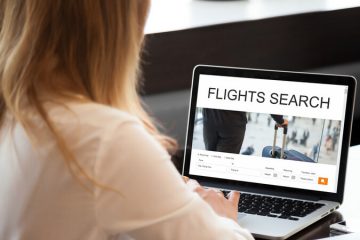
What Is The Meaning Of Open Booking?
Open booking refers to a travel booking approach where employees have the freedom to book their travel arrangements outside of the traditional corporate travel management system. Instead of using a designated platform, employees can book Read more…

Corporate Expense Cards: Types And Benefits
Corporate expense cards for travel ensure easy payment and streamlined management of expenses. These cards can be of any type such as corporate credit cards, prepaid corporate cards, VCC, Airline specific cards, and many more. Read more…
Let's get started!

Thanks for submitting your details.
We'll get back to you shortly.
Travel industry recovery: Business or leisure?
Research report.
- In a post-pandemic market, travel companies need to create and capture demand for leisure travel. We have identified 6 key ways for them to do this.
- In the short-term the travel industry will be characterized by a new kind of travel customer whose expectations and preferences will drive demand.
- The travel market’s recovery is largely dependent on the speed of the global vaccine rollout and it will return, primarily, as a leisure market.
- Travel companies need to reposition themselves for the post-pandemic market by activating a new strategy based on leisure travel.
T he whole travel industry is grappling with the ongoing impact of the COVID-19 pandemic. Travel priorities have changed radically for both leisure and business customers—with dramatic consequences for airlines and hospitality businesses.
An end to the pandemic may be on the horizon. But will the travel industry ever look the same again?
Many believe the Summer of 2021 will be a strong boost to recovery. However, business travel—the staple of the global travel industry —is likely to recover much more slowly. To survive the next few years, airlines and hoteliers must adapt quickly to capture the opportunities in this new industry landscape.
The imperatives? To refocus the strategy around leisure travel.

How to capture leisure demand
We’ve identified the six key areas that travel companies need to focus on to create and capture demand for leisure travel.
New post-pandemic travel trends
The pandemic fundamentally changed the priorities, values and behavior of travelers —whether by necessity or choice. Unsurprisingly, the emphasis is now on traveling as safely and healthily as possible. But consumers are also much more aware of the environmental and societal impact of their travel choices, building on a trend that predates the pandemic. There are four key areas of change:

Integrated personal wellness
Health and wellbeing are now priorities for travelers. Every business now has to be a wellness business.

Living for local
The pandemic has refocused people’s attention on their local communities. Domestic travel will be a priority for leisure travelers in the short term.
Doing real good
Travelers in the post-COVID era are looking for sustainable experiences that blend their own need for wellness with that of the planet.
Reinventing connection
Whilst people have been connecting virtually throughout the pandemic, there’s no substitute for seeing loved ones face to face.
New travel market challenges
What do the next twelve months hold for airlines and hospitality businesses? So much depends on the speed of the global COVID-19 vaccine rollout. Amazing progress is being made in some countries, while others are lagging.
In addition, the profile of demand has changed fundamentally—and in some ways permanently—as companies around the world realize much of their business can be done remotely. The need to travel and stay overnight for a face-to-face meeting will likely be much lower. So the travel market is now, in effect, a leisure market. And that’s a structurally smaller market than airlines and hotel companies have been used to operating in.
This structural shift changes how those companies need to go about attracting, converting and retaining customers. It also means they need to think creatively about what to do with underutilized assets.
The travel business is now a leisure business…and a smaller business.
A new playbook for the leisure travel market
So, how should airlines and hotels reposition themselves for the post-pandemic market? First and foremost, they must refocus on creating and capturing demand for leisure travel.
This creates six new areas of focus for travel companies:
Inspiring customers
Airlines and hotels must inspire potential customers and trigger a desire to travel by being active on social media and travel inspiration channels.
A “Glocal” marketing strategy
A global marketing strategy is an essential part of brand awareness, but for leisure travel, it needs to be complemented with local flexibility.
Rethinking loyalty
Points-based loyalty programs focused on frequent business travel need to be rebalanced around the functional and emotional side of loyalty.
Scalable media and content models
To capture new business, companies need a continuous personalized connection with travelers, across all channels and throughout the marketing funnel.
Data-driven decisions
Data unlocks the leisure opportunity by uncovering local needs, guiding the value proposition, increasing efficiency, and prioritizing investments.
Delivering seamless experiences
Ultimately, the experience must match up to the promise. Get it right and there are huge opportunities to increase brand affinity and loyalty.
Break the mold on travel loyalty programs
Activating the leisure strategy.
Here are some key steps travel companies can take to activate a new strategy focused on leisure travelers, both right now and over the medium term:

A new chapter for post-pandemic travel
There’s no doubt the travel industry is going through a seismic shift. Revenues from traditional business models built around business travel have disappeared overnight. Those revenues will not return immediately. Indeed, they may never recover to pre-pandemic levels. The leisure travel industry is the travel industry for the time being.
That’s why it’s essential that airlines and travel companies take action now. The risk of delay is high. But the opportunities for those that can adapt quickly are huge. This is the time to refocus on leisure, not business, and find new growth in the post-pandemic travel industry .
RELATED: U.S. millennials plan to spend more on luxury travel in 2021, new research from Tripadvisor reveals .

Explore travel’s changing realities in The Guide

Managing Director – Products Lead, Iberia
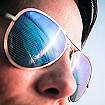
Make bold moves with intelligent travel operations

The force of change in the travel experience
Related capabilities, travel consulting, back to growth in travel, traveler experience.
- Search Please fill out this field.
- Manage Your Subscription
- Give a Gift Subscription
- Sweepstakes
- Travel Products
The 12 Best Walking Shoes for Women of 2024, Tested and Reviewed
We tested more than 50 pairs of walking shoes to find the best ones for every occasion.
Rena Behar is a freelance journalist and editor focusing on tech, travel, and gender. She has contributed to Travel + Leisure, TripSavvy, and more.
In This Article
Jump to a Section
- Our top picks
Our Testing Process
- Other Shoes We Liked
- Tips for Buying
- Why Trust T+L
We independently evaluate all recommended products and services. If you click on links we provide, we may receive compensation. Learn more .
Travel + Leisure / Joy Kim
The quest for a cute yet comfortable shoe that can magically take you from museums to a Michelin-starred restaurant can feel never-ending. But your perfect pair is out there, and the Travel + Leisure team is putting their feet to work to help you find them.
It’s hard to tell if shoes are comfortable off the rack, and the worst way to find out is when you’re ready to put them through the paces on vacation, only to end up with blisters and aching feet. That’s why our editors have tested more than 100 pairs of shoes to find the most comfortable ones for walking long distances. We wore each pair across a span of multiple months, as we dutifully analyzed factors like their comfort levels, fit, support, breathability, durability, and more. Check out our favorite pairs below.
Best Overall
Adidas cloudfoam pure 2.0 running shoes.
These insanely comfortable shoes make you feel like you’re walking on a cloud.
The sneaker construction may be hard to dress up at night.
The comfortable and easy to throw on Cloudfoams lived up to their name during our testing process, practically sweeping us off our feet despite the fact that we never even wore socks with them. They held up on long, hilly city walks and park trails, and even put a bounce in our step with zero rubbing or foot fatigue. The stretchy top creates a flexible, cradled feeling even on slightly wider feet. With regular wear, they haven’t shown any fading or developed any odor. We were especially impressed by their low price tag and noted they were more comfortable than other shoes three times the price. As a bonus, the Cloudfoams come in more than 20 different colors/styles, so you can get the perfect match for your travel outfits, and they’re made from at least 50 percent recycled materials. The Details: Running sneaker | Sizes 5 to 11 | Synthetic recycled materials
Travel + Leisure / Joy Kim
Travel + Leisure / Elena Garcia
Most Comfortable
Nike motiva walking shoes.
These are extremely cushioned and comfortable, propelling you forward while you walk.
The propulsion takes some getting used to, and they’re a little heavy.
We admit the Nike Motiva’s exaggerated rocker on the outsole felt a bit strange on first wear, but it quickly became the reason we love them so much. The rocker, or the curved sole, actually propels the wearer forward, which we found to be incredibly useful once we got used to it. We felt like we could literally walk in them forever thanks to a combination of the rocker, efficient cushioning, and reliable arch support. During testing, we compared the soles’ springiness and bounce-back to those of moon shoes, and although they run slightly heavy, they’re also quite flexible and bendable. The best part is that there are so many colors to choose from, including bright crimson, muted blush, classic black or white, and more.
The Details: Walking sneakers | Sizes 5 to 12
Travel + Leisure / Kimberly Souza
Travel + Leisure / Donna Freydkin
Best Leather
Olukai leather sneakers.
A solid leather construction and good support are paired with a versatile look and foldable back for extra style opportunities.
The back tab is a little stiff at first and may rub against the heel, but should soften with time.
The Pehuea Lī ‘Ili may feel stiff out of the box, but that just shows how solid their construction is. We tried to bend them in half, and they hardly bent at all, showing that they will stay durable with quality leather and a thick, supportive sole. We loved the roomy, wide toe box and the great amount of arch support. They also have a unique collapsible backing — the back of the shoe folds down so you have the option to wear them as a slip-on and breeze through airport security without having to stop and tie your shoes. The footbed is removable and washable, and you can choose from white, black, tan, or dark brown to match your favorite neutrals. Plus, the leather makes it easy to take them from day to night without having to go back to your hotel to do a complete change.
The Details: Collapsible heel sneaker | Sizes 5 to 11 | Leather upper, rubber sole
Travel + Leisure / Karen Chen
Best Casual
New balance 574 sneaker.
The 574s have a sporty vibe and are so comfortable you may forget you have them on.
Make sure you check your sizing based on New Balance’s chart, as we found they weren’t in line with usual sneaker sizes.
If you’re in the market for a more sporty-looking, casual sneaker, these may be the best walking shoes for you. They’re so comfortable and light, you'll forget you're wearing these sneakers. They’re well-made, with solid construction, and the laces stay tied — perfect for easy, breezy walks in the park, through city blocks, and for exploring new places.
The style is one of New Balance’s classic looks. Though it may not be to everyone’s personal tastes, people looking for an easy, neutral sneaker that is well made and highly comfortable will love them. Note that available sizes may vary based on whether you choose a unisex or women-specific style (the main difference seems to be the colors). There are also wide options available in all sizes for those who need a little more space.
The Details: Running sneaker | Sizes 5 to 12 | Suede and mesh upper, foam midsole
Travel + Leisure / Mariah Tyler
Best Sandals
Keen women's elle backstrap sandal.
This easy-to-wear style boasts comfortable elastic with just the right combination of stretch and security.
They don’t offer very much arch support.
The Elle is understated yet totally stylish. These shoes are extremely comfortable, and we found that they held up for miles of walking wherever your travels take you. They run true to size with the perfect amount of room at the toe and heel, and the elastic straps are very secure. Elastic can be tricky, but these sandals tackle it with ease, offering a good amount of stretch, a feeling of security, and the ability to stay in place without being too restrictive or cutting off circulation.
We did experience some minor rubbing, but it went away quickly with wear; we felt a little bit of hip and knee pressure as well, which also lessened over time. The soles are slightly cushioned for comfort, but don’t provide a lot of arch support. There’s also a good range of colors available for multiple outfits, which is always a travel bonus. You can dress them up or down with any outfit and know that your feet will be comfortable wherever the day or night takes you. They’re stylish and durable, and they’re flat, so they’re easy to pack for a trip or quick getaway.
The Details: Sandals | Sizes 5 to 11 | Recycled PET stretch upper, EVA midsole and footbed, rubber outsole
Travel + Leisure / Rachel Thalhuber
Best for Plantar Fasciitis
They’re extremely supportive through the soles and ankles, helping alleviate foot pain during testing.
They won’t keep your feet warm on cold days.
The first thing we noticed when sliding these on was the impressive support for people with high arches. The second thing we noticed was how much wiggle room we had. Our toes could move freely without feeling cramped, but the shoes are also snug enough to stay on during high-intensity activities. And the third thing we noticed? There’s virtually no break-in period — after a few days of wear, we still had no sores, blisters, or discomfort of any kind (which is a major selling point for people who often do have foot pain or plantar fasciitis). Other features of these shoes we appreciate are the high-quality cushioning, shock absorption, ankle support, and breathability. Snag these in more than 40 hues ranging from solids to color block styles.
The Details: Running sneaker | Sizes 5 to 11 | Rubber, recycled polyester, and zero-gravity foam
Travel + Leisure / Ashleigh Morley
Travel + Leisure / Brian Sanford
Best Cushioning
Asics gel-nimbus 25.
Every single step feels light and soft thanks to the cushioning.
Because of the thick cushioning, they don’t feel as stable as other styles.
Before we even tried the Asics Gel-nimbus 25 sneakers for ourselves, we’d heard about the shoes’ legendary cushioning. When we finally got to put them to the test, the sneakers more than lived up to the hype. In addition to providing serious comfort and padding around the foot, we also found the toe box to be very spacious, our heels never slipped out, and the curved soles helped propel us forward. The shoes also boast incredible shock absorption, so we felt that every step and landing was a soft one, and we didn’t feel any pain at all over weeks of wear and walking over various terrains. We also love that they come in more than two dozen unique colorways.
The Details: Running sneaker | Sizes 5 to 13 | Knit upper, AHAR outsole rubber
Travel + Leisure / Madison Yauger
Bogs Holly Lace Leather Boots
These boots tackled everything we threw at them, including standing ankle-deep in a lake.
If you’re looking for something lightweight, these feel heavier than sneakers.
If you want a solid, waterproof, reasonably attractive do-it-all boot, the Holly is your best pick. We did find that they started out fairly stiff, so you may want to break them in before you travel, but they softened up during our testing period. They also aren’t very breathable (which makes sense given their waterproof construction), so you may want to reserve these for cooler weather, though we didn’t feel sweaty when wearing them. The footbeds are very cushioned and provide great arch support, and the material of the upper didn’t look scratched or dinged at all after testing. The dense rubber soles make them a little on the heavier side (though they were still comfortable to walk long periods in), but also provide grip across rougher terrain or wet conditions. They also impressively kept our feet dry even when standing ankle-deep in a lake. These practical lace-up boots make a great alternative to sneakers if that’s not your style.
The Details: Lace-up boot | Sizes 6 to 11 | Leather upper, recycled PET lining, EVA footbed | Waterproof
Travel + Leisure / Kristin Cleveland
Best Arch Support
Chaco women's zx2 classic sandal.
Chaco combines a funky, strappy design with a super-thick and supportive sole.
The strap adjustment system can be a little fussy, and if you have narrow feet, the straps may drag on the ground.
If you prioritize foot comfort, these are the sandals for you. They are not only incredibly supportive and sturdy, but truly have all-day comfort. Though the high level of arch support can take some getting used to, our feet felt comfortable all day and never tired; the sandals even alleviated our standing-desk-related foot pain at home. We noted some chafing from the toe loop, but it improved over the course of the break-in period.
Chaco is known for its adjustable strap system, which provides a great fit for thin feet, but achieving that perfect fit had the side effect of the straps dragging on the ground — though if you have average or wide feet, you likely won’t encounter this. We thought the quality felt superb, with a supportive, hardy sole and exceedingly comfortable arch and heel support. The sandals also come in a fun array of colors in addition to basic black, so you can wear these in multiple situations whether hiking , trekking through water, or exploring a city.
The Details: Sandals | Sizes 5 to 12 | Polyester webbing, rubber sole
Travel + Leisure / Jeanne Geer
Best Lightweight
Kizik lima slip-on sneaker.
These slip-ons will keep you light on your feet with all-day sturdiness and support.
Some online reviews note that they’re not so easy to slip on hands-free.
Kizik’s Limas fit perfectly from the first wear, with nary a problem popping up even during two straight weeks of daily wear. Though their sturdiness makes them look heavy, they feel light while still being supportive. They’re also super breathable and airy, which is great for long, sweaty travel days. We thought they felt true to size, with a nicely spacious toe box. After wearing them for hours, we noted they had consistent arch support throughout the day, as well as excellent traction across various weather conditions and types of terrain. As an extra travel bonus, they’re also designed to easily slip on and off without having to use your hands, though some online reviews note that they’re not always easy for everyone to slip on.
The Details: Slip-on sneaker | Sizes 5 to 13 | Recycled-textile upper, textile lining, rubber sole
Travel + Leisure / Ivy Ford
Best Traction
Merrell speed eco.
These comfortable hikers are light and breezy, and will give you great support and traction.
They have a sportier appearance and not a lot of ankle support for heavy hiking.
When you’re hitting tougher terrain, you need shoes with a little more grip. Opt for the Merrell Speed Eco if you’re going out on the trail or spending the day walking on dirt rather than concrete. They were super comfortable straight out of the box, even paired with thin, everyday socks, and our feet felt supported the entire time. The material feels durable and high-end, as well as extremely breathable, and they offer good arch support no matter where you’re walking. While they’ve gathered a little dust, they stayed in great condition during our hikes and still look almost brand-new even after five months of testing. Do note that if you’re doing more hardcore hiking , though, that they don’t have a lot of ankle support.
The Details: Hiking shoe | Sizes 5 to 11 | Rubber outsole, EVA midsole, jacquard upper
Best Waterproof
Sam edelman laguna chelsea boot.
Sam Edelman
These boots combine style and protection from the elements.
It takes a few wears to break them in against stiffness.
It’s always nice to have a rain boot that isn’t just a piece of plastic. Sam Edelman’s Lagunas are sturdy, stylish, and extremely supportive, making an excellent option when you want to walk around in something other than a sneaker. They do take a while to break in, but they feel stiff, not painful at all during that break-in period. They offer a lot of traction and water-repelling ability — we felt no wetness seeping through even when standing in a puddle that covered the entire top of the shoe. We stayed dry after tramping through city puddles, and the boots still managed to look nice afterward, too.
The Details: Chelsea boot | Sizes 5 to 12 | Leather, synthetic, and fabric | Waterproof
Travel + Leisure / Taylor Calta
We tested upwards of 50 pairs of shoes in our search for the most comfortable women’s walking shoes. The process started straight from the unboxing, when we picked up each shoe and tried to bend it in the middle to evaluate its level of arch support. We then assessed each pair for flexibility, material and construction quality, and weight.
Each shoe then got a minimum of three test wears of different durations: 30 minutes, three hours, and eight hours. During the 30-minute test, we noted ease of wear, fit, and any rubbing, redness, or feelings of restriction. After three hours, we also added an evaluation of whether the shoes seemed to be forming to our feet and how they fared on various surfaces. Then during the eight-hour test, we checked again if they were starting to feel more comfortable and whether the shoes felt flimsy over the course of the day. We continued to wear the shoes as often as possible during the rest of the testing period, discontinuing if they became painful.
We’ve also integrated the results of three other shoe tests: our tests for the best slip-ons , waterproof boots , and hiking shoes . Slip-ons were subjected to the bend test and then worn at least five to seven times for a minimum of five hours on different types of terrain. In our waterproof boot tests, we wore each pair of boots around for an hour to break them in. Then, we wore them on at least two outings of one to two hours in duration, ideally in wet conditions, focusing on fit and comfort, traction, and breathability. If the weather simply didn’t cooperate, we stuffed a boot with paper towels and ran it under a steady stream of water, then examined the paper filling to assess its water-repelling capabilities. Hiking shoes received similar tests — minus the shower — with an examination, a one-hour break-in, and at least two hikes.
We wore each pair of shoes out and about for six months to see how they held up long-term, and we will continue to update this article as we test even more comfortable walking shoes.
Other Walking Shoes We Liked
Here are a few more pairs of shoes that we liked, though they didn't make our main list due to some issues found during testing.
Allbirds Wool Runners : These Allbirds regularly top most comfortable shoe lists, but we found a few flaws that kept them from making it into our top picks. They’re very comfortable and good for long periods of walking. The sole is thick and provides good arch support, but it was still thin enough that the heel warped easily due to lack of lining and wouldn’t stand up to regular slipping on and off. We felt that the shoes were quite delicate and shouldn't be worn in any type of moisture or in very warm weather.
Travel + Leisure / Taylor Fox
Vessi Women’s Everyday Classics : These shoes were also comfortable out of the box but did have some friction under the laces at the end of long wears. The sole is lightweight but sturdy and adequately supportive, but we didn’t like that they aren’t available in half sizes and looked extremely wide when on. They’re also not particularly versatile style-wise: they lean slightly orthopedic-looking because of the cloud-like sole design, and we don’t think these are stylish enough to dress up.
Travel + Leisure / Skye Senterfeit
Kizik Roamers : These kicks were stylish and extremely shock absorbent — plus, they fit us great. However, we weren’t fans of how heavy they are. The laces also kept coming untied no matter how tight we tied them, which made us feel like we’d rarely reach for these if they were in our closet.
Travel + Leisure / Cecily McAndrews
Tips for Buying Comfortable Women’s Walking Shoes
Prioritize comfort and support.
We know looking cute is important, but don’t let vanity ruin your vacation! Your travel shoes should be comfortable above all else.
“Rule of thumb is that if you can take a shoe and bend it in the middle very easily without much force, then the shoe is too flimsy and not supportive enough,” says podiatrist Cory Clement. "This can lead to conditions like heel and arch pain, aka plantar fasciitis, due to the decrease in support and lessened shock absorption.”
Consider versatility
You only have so much luggage space, especially if you’re committed to the carry-on lifestyle . Ideally, you only want to bring three, maybe four, pairs of shoes total, so make sure they can go everywhere you want, especially if you’re going to be out and about from breakfast to dinner without a chance to change. If you look for versatile pairs of shoes that you can wear during the day but also while going out at night, you won't have to pack as many.
Think about how you plan to use them
What are you planning to do during your trip? Are you lounging on the beach most of the day (look for sandals), or will you be pounding the cobblestone pavement (you'll want something supportive)? What’s the climate like where you’re going? You may want something more lightweight and breathable for warm weather or something with grippy soles for rainy climates. Do you tend to visit five-star fine dining establishments or prefer a pick-up window? A stylish pair of sneakers can take you a lot of places, but not quite everywhere.
Short answer: comfortably. Your foot should feel supported but not stifled, and you should have room to comfortably wiggle your toes.
“Women’s and men’s travel shoes should have a firm heel counter and shouldn’t bend in the middle,” Clement says. “Also check the toe box of the shoe. If it is too narrow, this can lead to discomfort and crowding leading to sore toes and corns.”
You can break in walking shoes by wearing them around the house for a week or two before your trip. The best travel shoes will be the ones that keep you most comfortable for the longest period of time.
First, try Clement’s bend test. Once you’ve established that they don’t bend in the middle, check that the sole is made of a firm material that won’t wear out over time. You can also look for a physically upraised arch on the shoe, but this doesn’t necessarily guarantee support. If you’re shopping online, look for a seal of approval from the APMA and known supportive brands.
If your shoes aren’t very technical, yes, but keep in mind that different categories of shoes are designed to maximize different features. Hiking shoes with extra-grippy lugs for dirt, for example, won’t be as good for walking on pavement and will likely also feel much heavier than a pair of walking shoes. More highly engineered running shoes, meanwhile, encourage your feet to move in a way that’s more conducive to speed and a runner’s gait (less stability, more springiness), so they won't always provide the right padding if you’re moving at a slower pace.
Why Trust Travel + Leisure
For this story, Rena Behar summarized the testing notes and data from multiple T+L editors, who conducted extensive feet-on testing of the shoes. They also utilized their own experience as professional gear reviewers, frequent travelers, and compulsive hunters of both cute and comfortable shoes. While researching walking shoes for women, we spoke with podiatrist Cory Clement to get expert feedback.
Love a great deal? Sign up for our T+L Recommends newsletter and we'll send you our favorite travel products each week.
:max_bytes(150000):strip_icc():format(webp)/JackieCuccoHeadshot-20cc479faeb842d0bf8e77406c9c1382.jpg)
Leisure travel
Leisure travel typically refers to a vacation-type trip that’s taken in one’s free time and for one’s own pleasure and entertainment. It can be done with the family, with a partner, with friends, or alone.
Leisure travel usually includes various pleasurable activities such as sightseeing, relaxing on the beach, experiencing local attractions , and so on.
Leisure travel is naturally contrasted with business travel which implies working while on the trip. However, sometimes the boundaries between the two are blurred, creating opportunities for other travel types such as bleisure, workation , etc.

Recommended content for you
Video: business vs leisure travel, christmas around the world: christmas tour ideas for an unforgettable vacation, experiential travel explained: players, distribution landscape, and opportunities, video: how luxury travel is now different, customer experience personalization in travel and hospitality using behavioral analytics and machine learning.
Our website uses cookies to ensure you get the best experience. By browsing the website you agree to our use of cookies. Please note, we don’t collect sensitive data and child data.
To learn more and adjust your preferences click Cookie Policy and Privacy Policy . Withdraw your consent or delete cookies whenever you want here .
Get in Touch
Yes, I understand and agree to the Privacy Policy
Understanding the Differences Between Business and Leisure Travelers
Aileen Hoang
A hotel’s business mix is commonly comprised of a different percentage of segments, such as business and leisure travelers . These segments of travelers are two separate entities that have different wants, needs, and travel patterns. A better understanding of your business mix of leisure and business travelers can ultimately lead to more success for your hotel if action is taken according to their preferences. Here are some crucial points to understand about business and leisure travelers and a few ways for hoteliers to cater to these two segments.
Understanding Business Travelers:
- Location is key: While traveling for business, travelers are at the beck and call of scheduled meetings, presentations, etc., which is precisely why a hotel’s location is one of the top priorities for business travelers. Their hotel options are limited, as they demand a convenient location that is close to their conference or convention venue that will allow them to go to their meeting point in a short time frame. It is essential for hotels that are close to convention centers or other meeting areas to put a significant emphasis on their location to draw in business travelers to their hotel.
- The need to be continuously connected: Naturally, business travelers are regularly using their mobile phones or other devices to remain connected with their clients and colleagues during their business trips. Being able to access their email, join a video meeting, or open large file attachments quickly and efficiently is extremely important to the business traveler segment. Hotels that don’t offer fast WiFi or any internet access at all would not be an ideal place for business travelers. With the growing age of always-connected travelers, the debate of offering WiFi is now a must in the hospitality industry.
- Make more loyal hotel guests: Due to the higher frequency of travel and less time spent on the booking process, business travelers have a higher tendency to stick with certain hotels that meet their criteria compared to leisure travelers. 65% of business travelers belong to a hotel loyalty program, according to a recent study from Google. Offering an excellent hotel loyalty program that offers loyal guests with special offers, free upgrades, or free services, is an excellent way to keep business travelers returning to the hotel for their business trips.
- Emphasize the necessity for all-inclusive amenities : Hotels that offer all of the necessary amenities that business travelers need to prepare for their work in the morning is of great importance. Amenities like continental breakfast, a coffee maker, an ironing board with iron, and more necessary amenities for the morning prep are essential for business travelers. After a long day of work, business travelers also desire a seamless way to unwind in their hotel room. Not having a stocked minibar, functional air conditioner, or fully equipped bathroom will not have business travelers returning to your hotel for their next business venture.
Understanding Leisure Travelers
- Generally, more price-sensitive: Unlike business travelers who usually spend more on their travels, leisure travelers tend to be more price-sensitive than their business counterparts. Leisure travelers spend more time deciding on the most suitable hotel for their travels and also make a more considerable effort to find the best possible deal for their stay. To make it easier for guests to find the lowest and best price, providing a booking tool that allows guests to search in real-time within their budget is extremely helpful to cater to leisure travelers.
- Strong consideration for reviews and recommendations: When deciding on a place to stay, leisure travelers turn to their family, friends, colleagues, and online reviews for recommendations more so than business travelers who rely on company recommendations and also online reviews. As stated by Google’s Traveler Study, 82% of leisure travelers consider reviews to be very to somewhat important, compared to 77% of business travelers. For leisure travelers, a large amount of negative reviews removes a hotel from their choice set, but would otherwise prefer to pay the lowest price. Therefore, it is imperative for hoteliers to regularly respond to reviews and resolve issues that are presented to them through travel review websites. Additionally, since leisure travelers also rely on recommendations of those closest to them, a hotel referral program can offer significant benefits. For example, a points-based system that provides discounts or upgrades for guests that recommend their family and friends to stay at the hotel is another viable method for hotels to gain more business.
- Greater attraction to packages and specials: Leisure travelers are always looking for ways to improve their travel experience, which is the reason why they are more drawn to hotel packages than business travelers. Equipped with the mindset of having a great vacation experience, the majority of leisure travelers are looking for hotels that provide them with incentives to stay there than any other hotel. There are plenty of different packages that hoteliers can create for guests, such as delivering a package that is associated with a significant event in the city. The hotel can also offer walking tours around the most popular tourist destinations in the area, itineraries for family fun or romantic getaways, and much more. This is the opportunity for hoteliers to get creative, do their research on the most prominent demand generators in their area, and utilize this valuable information to increase the number of guests to the hotel through packages.
- Desires extra on-site hotel facilities: Leisure travelers have a greater appreciation for the extra “frills” that hotels offer to their guests. For example, a hotel that offers a pool, fitness area or a restaurant receives a lot more bonus points for leisure travelers. Therefore, it makes it no secret that hotels that offer extra facilities and amenities are much more appealing to leisure travelers than hotels that don’t offer these extras. Business travelers, on the other hand, do not put as much emphasis on these hotel extras as leisure travelers do. So, if your business mix is mostly comprised of leisure travelers, it is beneficial to highlight your hotel’s extra facilities and amenities to attract these types of guests.
To have a successful business, it is crucial to understand the needs and wants of your customers. The same concept applies for hotels, as it is not only essential to acknowledge your guests’ preferences, but also to understand the differences of your business and leisure traveler segments. By better understanding your business mix, hoteliers can market to these different segments with greater effectiveness. Taking the time to understand and research the differences of your business mix, such as business and leisure travelers, can only help to improve your hotel’s influence on guests. You achieve this by providing them with what they truly want in their travel experience. Are you interested in further reading? Check out the five hospitality blogs every hotelier should be reading .

Blog Archive

Small Business Cybersecurity Tips

Zero-Click Searches Impact on SEO

Solution vs. Consultative Selling

New Product Marketing Strategies

B2B Social Media Trends in 2024

Non-Monetary Employee Incentives

Sell New Products to Current Clients

Ultimate Remote Work Tool Guide 2024

2024 Social Media Challenges

Sales Mastery with Google Alerts
Popular Authors

Ready to Grow Your Business?

Products Websites SEO Social Media Management Software
Our Work About Us Blog Contact Support
9682 Telstar Ave., Suite 104 El Monte, CA 91731 (626) 444-9111 General Info (626) 400-5525 Sales Email: Sales Email: Support
Mon-Fri | 06:30 AM - 05:30 PM (PST) Sat-Sun | Closed
© 2023 E-Marketing Associates Privacy & Security | Accessibility Statement | Sitemap

IMAGES
COMMENTS
Bleisure travel essentially involves two trips in one, which can present a packing challenge. Select versatile and comfortable wardrobe pieces that transition from the boardroom to a leisurely walking tour (like these editor-tested travel pants ). Sticking to a cohesive color scheme, a proven travel tip, can save space in your luggage.
Bleisure travel has numerous benefits. To start, it can benefit the traveler, because they can save money and time while having leisure and vacation time during a work or corporate trip. It also helps companies, as employees are happier and better rested after a bleisure trip.
Leisure Travel RVs : With over 45 years of history in the RV industry, you can be rest assured that you are buying from a company that is committed to its products; past, present and future. Committment to customer service; before, during and after your purchase is an integral part of the LTV way. Double screwed face framing, number-coded wiring and powder coated chassis components are all ...
Allied Market Research, a subsidiary of Allied Analytics, based in Portland, Ore., estimated that the bleisure travel market was $315.3 billion in 2022 and would reach $731.4 billion by 2032. As ...
Travel + Leisure Co. is the world's leading membership and leisure travel company, with nearly 20 travel brands across its resort, travel club, and lifestyle portfolio. The company provides outstanding vacation experiences and travel inspiration to millions of owners, members, and subscribers every year through its products and services ...
Bringing the expertise of Travel + Leisure to life, our editors hand-picked the dreamiest destinations, hotels, and experiences to curate these customized itineraries. With Travel + Leisure GO, you'll enjoy preferred pricing when you book. HAND-PICKED HOTELS. SELF-GUIDED. SPECIAL PERKS.
Since 1971, Travel + Leisure editors have followed one mission: to inform, inspire, and guide travelers to have deeper, more meaningful experiences. T+L's editors have traveled to countries all ...
The agency's last major leisure travel study was conducted in 2019, so this year's report reveals much about how leisure travelers' planning and booking behavior has altered from pre-pandemic times. Currently, some of the most impactful factors that are creating some startling changes in consumer mindsets, preferences and behavior are the ...
Travel + Leisure is a travel magazine based in New York City, New York.Published 12 times a year, it has 4.8 million readers, according to its corporate media kit. It is published by Dotdash Meredith, a subsidiary of IAC, with trademark rights belonging to Travel + Leisure Co., a timeshare company capitally separate from IAC but licensing trademark to.
U.S. Leisure Travel Is Back at Pre-Pandemic Levels for the First Time. 2 minute read. Tourists at a near-empty Patong Beach in Patong, Phuket, Thailand, on Monday, July 19, ...
Going forward, Leisure travel trends highlight a shift towards more conscious, immersive, and personalized experiences. With sustainability at its heart and technology as its backbone, the future of travel promises to be exciting! Read more: Latest. tourism travel. Our Social Presence. 68,240. 127,135. 24,500. Categories.
Domestic leisure travel is normalizing, yet, continues to experience growth—serving as a lifeline for the industry. Why it matters: In 2023, domestic leisure generated $855 billion in travel spending. What else: Our consumer insights data from Ipsos reveals that, while the majority of recent air travelers say they are at least somewhat ...
Travel & Leisure: Number One Tour Operator in the World, scoring 98.14 out of possible 100. Conde Nast Traveler: Best Travel Specialists in the World 2021, 2020, 2019.
Identification. Leisure travel is travel in which the primary motivation is to take a vacation from everyday life. A leisure trip is often characterized by staying in nice hotels or resorts, relaxing on beaches or in a room, or sightseeing and experiencing local tourist attractions. Most meals are eaten out when traveling for pleasure ...
20 Best Things to Do on Oahu, According to Locals. This Little-known Free Amtrak Hack Makes Train Travel Way Easier. You Can Use Your Costco Membership to Score Major Vacation Deals. These U.S ...
Travel for leisure offers greater flexibility in terms of travel times and accommodations, as tourists do not have to follow strict schedules. 3. Travel cost considerations. Cost considerations are common in business and leisure travel. However, business travel involves a focus on returns on travel expenses.
Even prior to the pandemic, hybrid business-leisure trips, in which extra days are tacked onto a business trip for leisure enjoyment, increased 60% across five countries surveyed between 2016 and ...
A game-changer from the chassis up, the Wonder Class C RV by Leisure Travel Vans is packed with smarter space solutions that combine superior design with innovative functionality, allowing you the freedom to go wherever your wonders may lead you. Note: High demand and limited chassis availability are leading to increased wait times for Wonder ...
In brief. In a post-pandemic market, travel companies need to create and capture demand for leisure travel. We have identified 6 key ways for them to do this. In the short-term the travel industry will be characterized by a new kind of travel customer whose expectations and preferences will drive demand. The travel market's recovery is ...
We tested more than 50 pairs of walking shoes to find the best ones for every occasion. Rena Behar is a freelance journalist and editor focusing on tech, travel, and gender. She has contributed to ...
Leisure travel typically refers to a vacation-type trip that's taken in one's free time and for one's own pleasure and entertainment. It can be done with the family, with a partner, with friends, or alone. Leisure travel usually includes various pleasurable activities such as sightseeing, relaxing on the beach, experiencing local ...
Generally, more price-sensitive: Unlike business travelers who usually spend more on their travels, leisure travelers tend to be more price-sensitive than their business counterparts. Leisure travelers spend more time deciding on the most suitable hotel for their travels and also make a more considerable effort to find the best possible deal ...